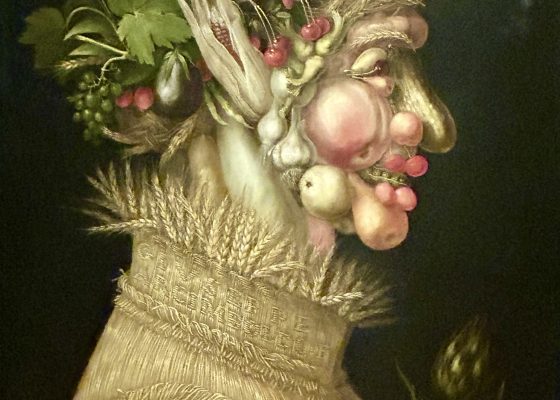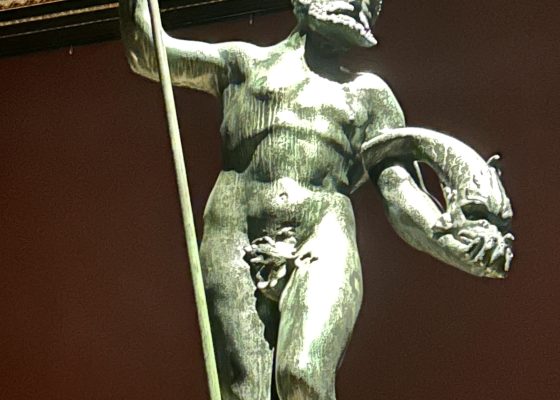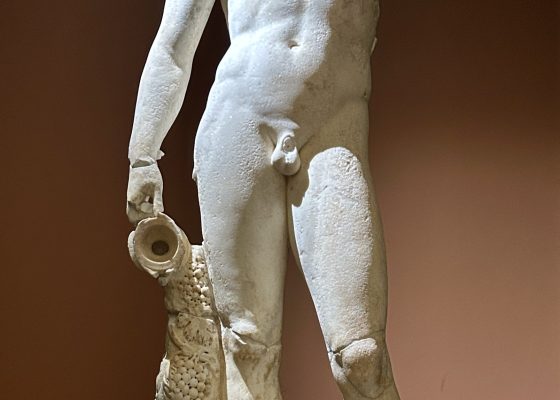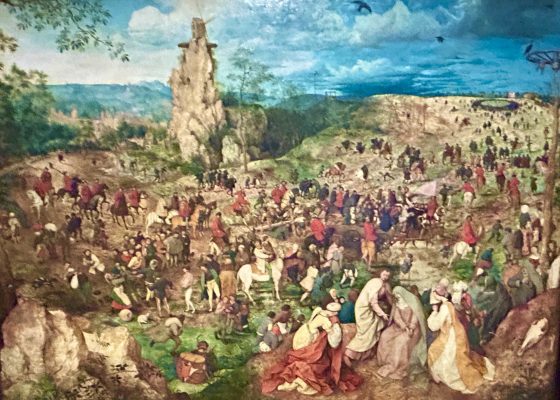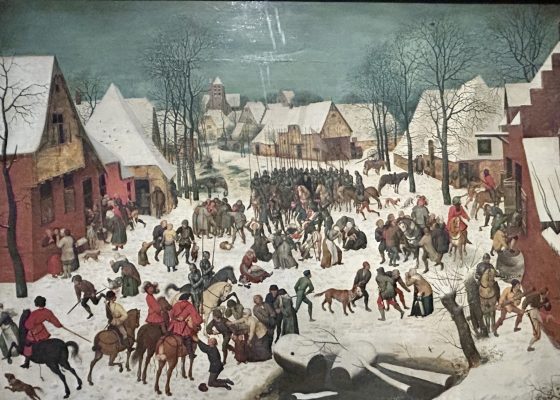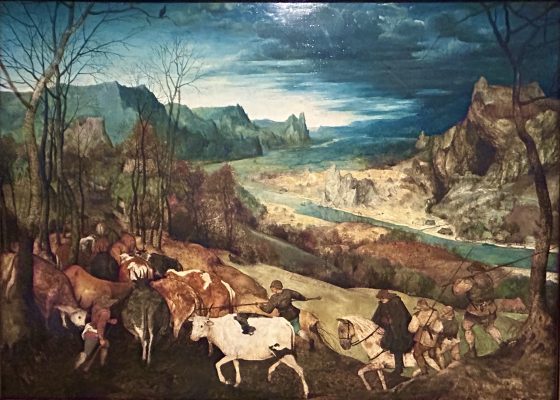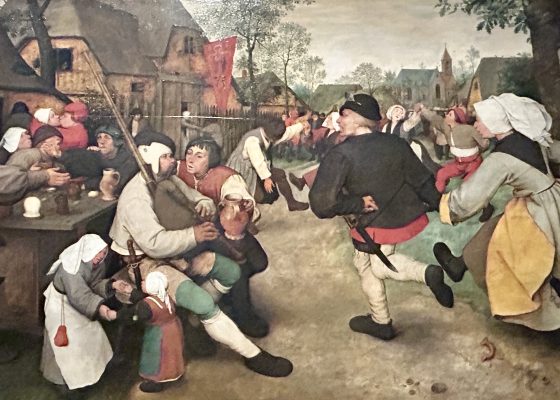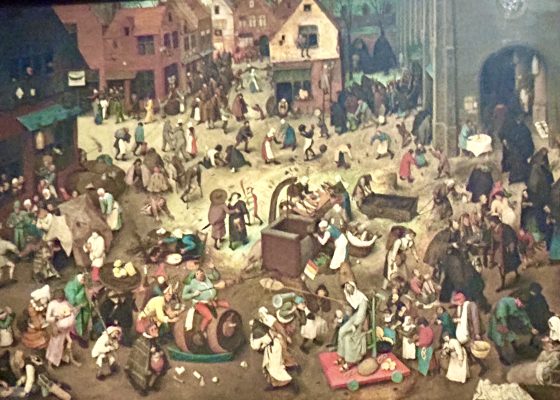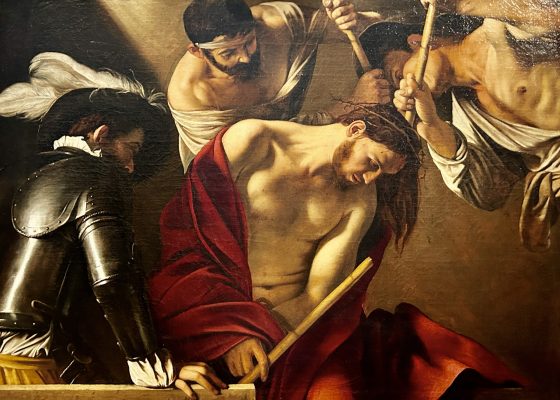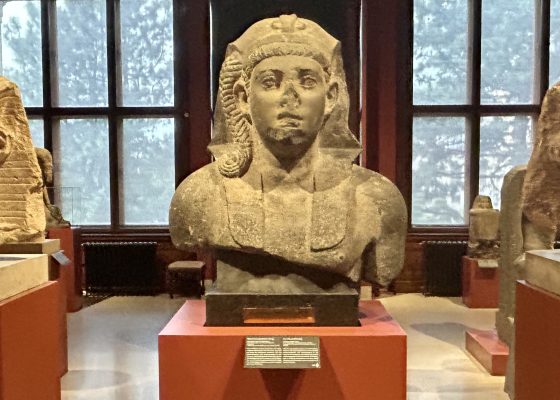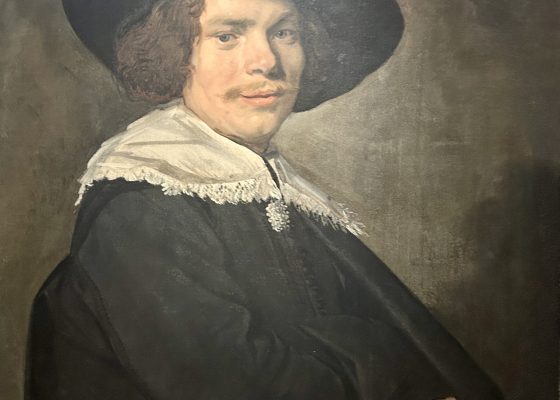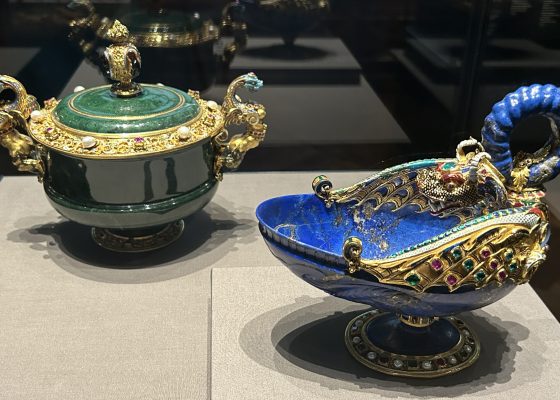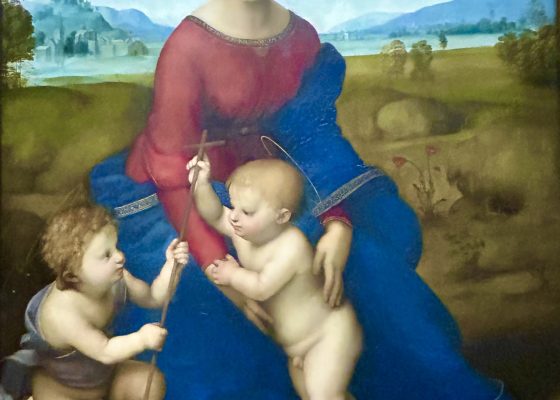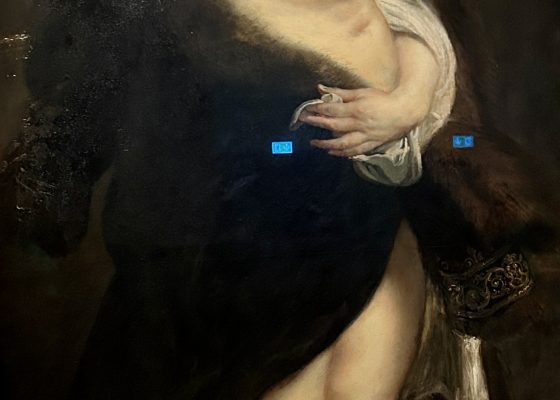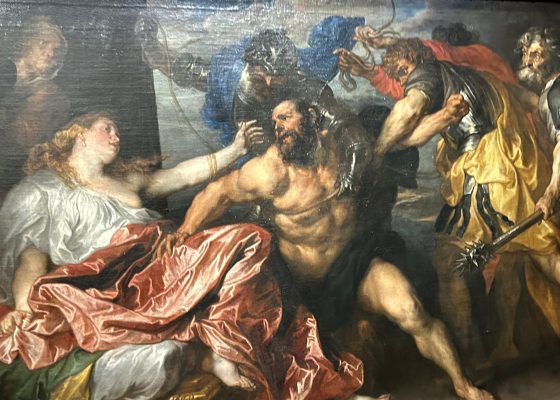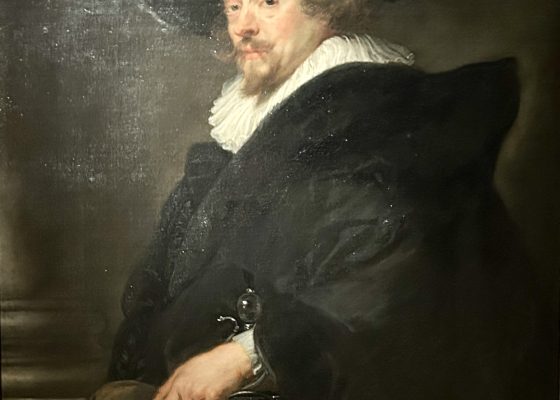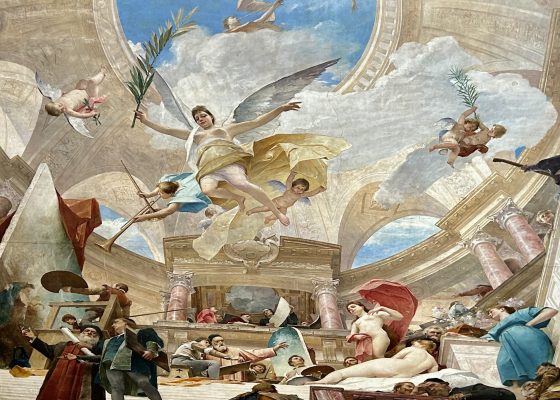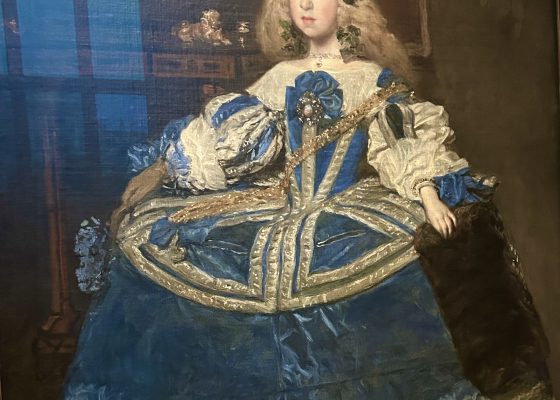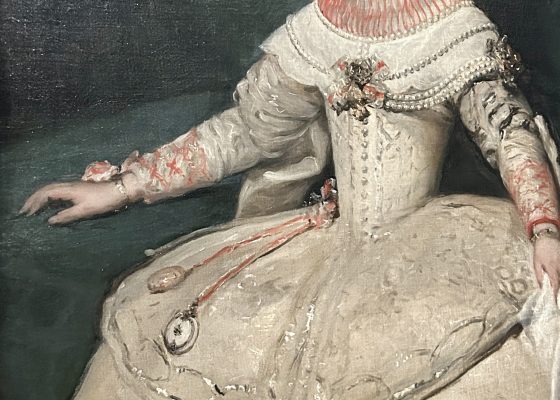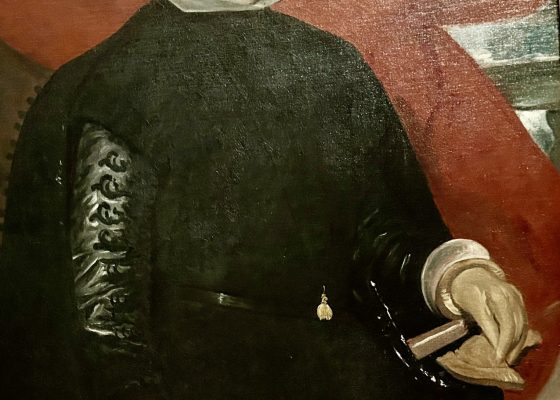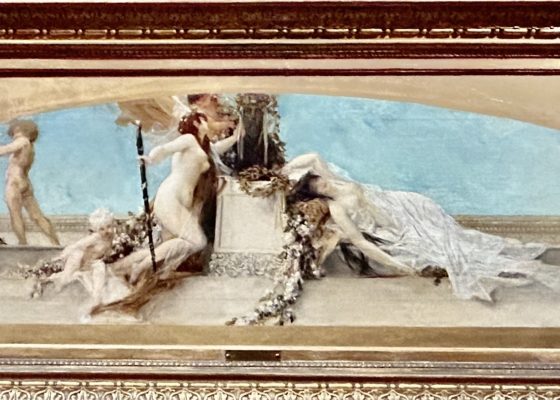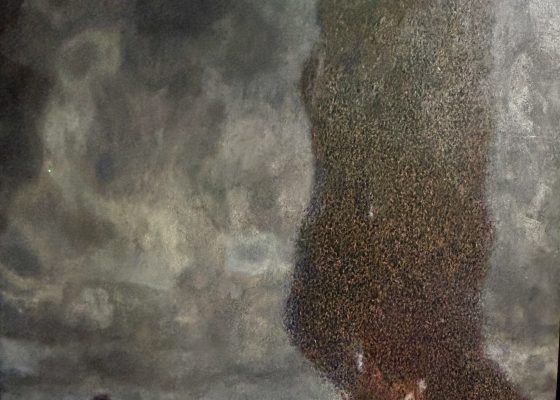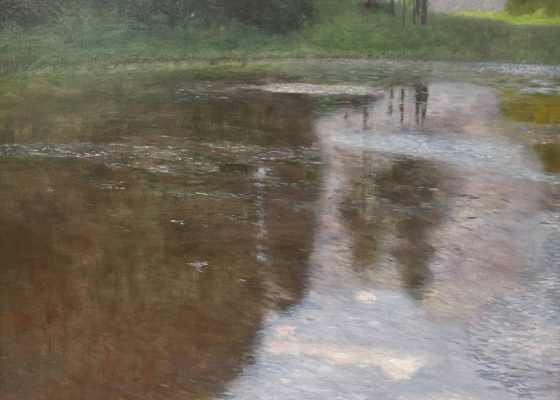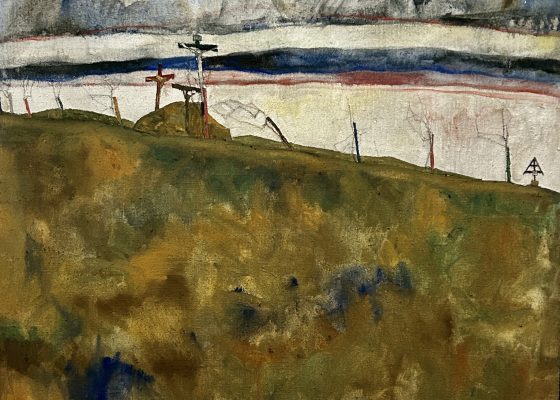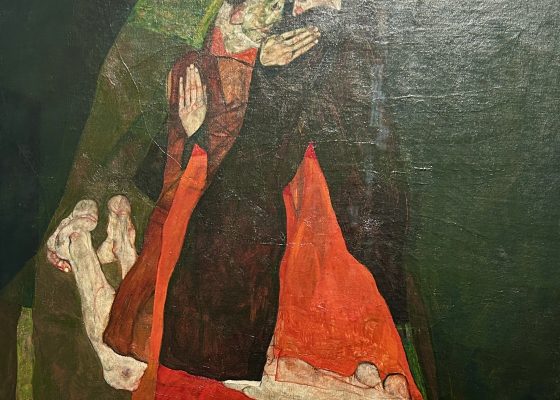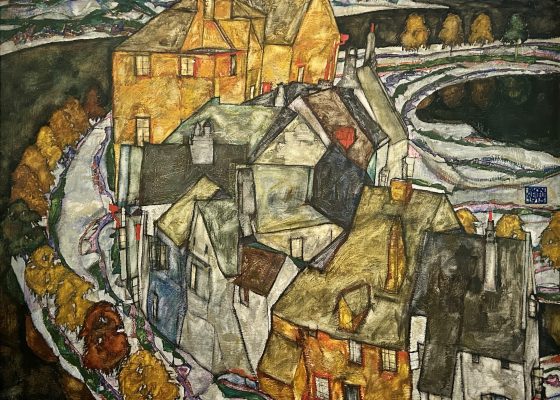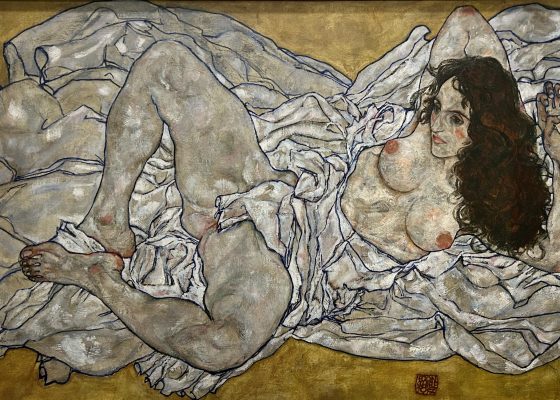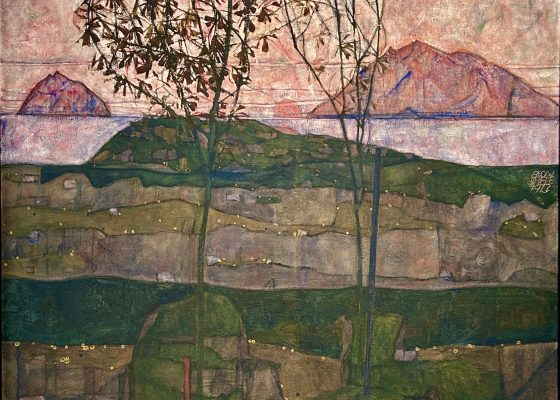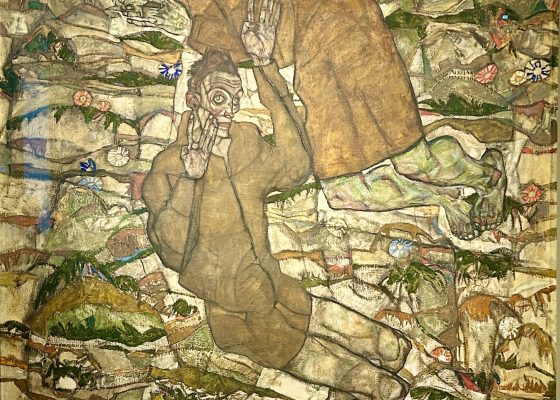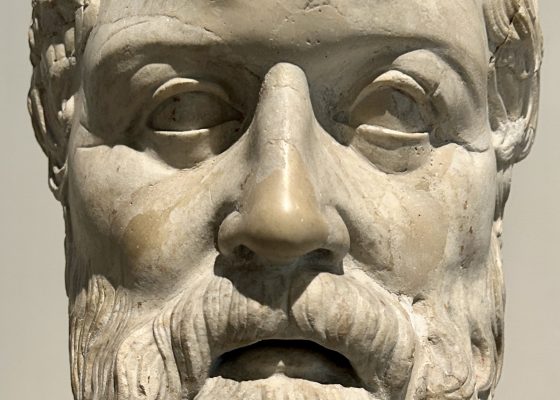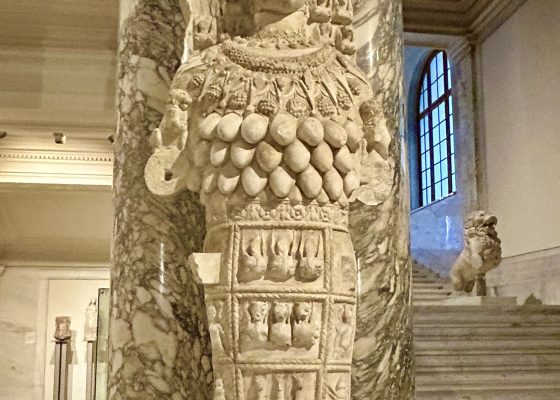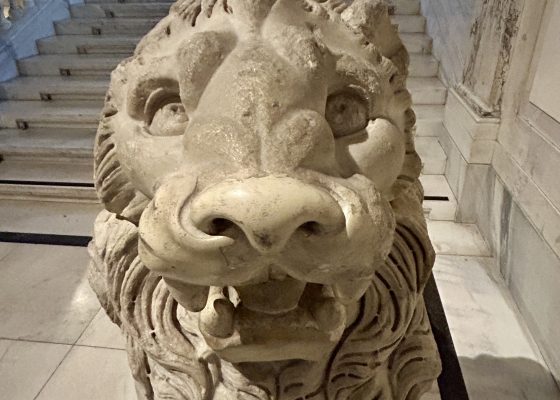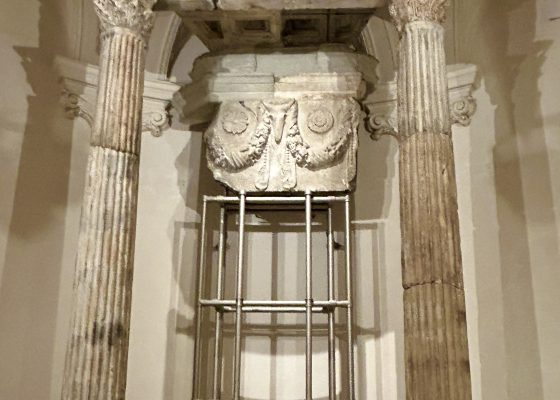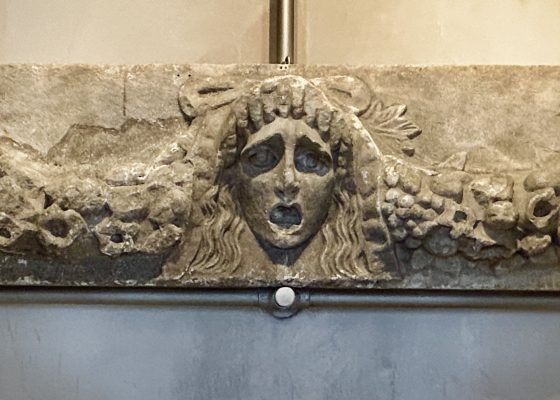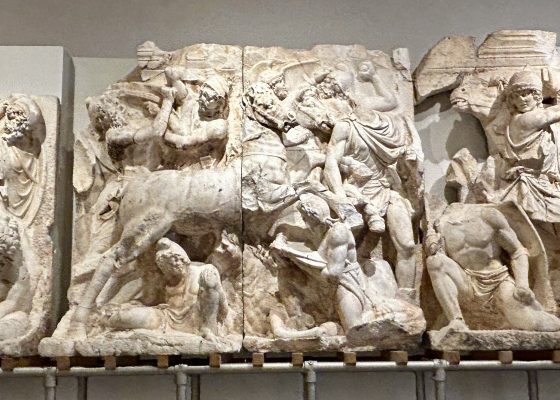Vienna – A Whirlwind Tour
Recently I found myself with three extra days in Europe. I had just finished a Canadian chapter SATW meeting in Seville, Spain and in four days I was to meet Alison in Cyprus to begin an Adventures Abroad tour there with our friend Martin Charlton. I had ascertained that there were no direct flights from Spain to Cyprus so looked for a city I could fly to and then later directly to Larnaca which is the principal airport for that country. I also wanted to find a city that I had not visited before and that’s when I realized that Vienna was the only sensible choice as Austria Air had a direct flight to Larnaca that landed at almost the same time as Alison’s BA flight from London.
I hopped on a very reasonable Iberia Air flight from Madrid to Vienna and now had almost three full days to explore this fabled city, home of the Habsburg Empire for centuries. What follows are a few of the highlights of those few days including three great museums, dead composers, the famous Wheel and many, many miles of wandering through parks and city neighbourhoods.
The first thing I learned after checking into the Residence Inn Vienna City East was that the city has a public transportation system second to none. Almost directly across from the hotel was an entrance to the U-Bahn where I purchased a 72 hour pass and after validating it the first time never had to produce it again. You just get on and off trains, trams and buses without anyone checking to see if you have a valid ticket. That tells me that the Viennese are an honest lot. In Toronto, I doubt half the riders would pay if they knew no one was checking their tickets.
For some reason I always thought of Vienna as a not particularly large city population wise; after all there are just over nine million people in Austria. However, one third of them live in Vienna or its suburbs making it the fifth largest city in the EU behind only, Berlin, Madrid, Rome and Paris. But here’s what does make Vienna seem different or in a sense much smaller than those other cities – it’s not overrun by tourists. The historic centre of the city is monumental in scale and that is emphasized by the fact that one feels dwarfed by the sheer size, something that would not happen if the open spaces were thronged with gawking sightseers babbling in a dozen different languages. This is really brought home to you when you visit any of the museums, even the most famous ones and I’ll get to those shortly, but first a little history.
The Habsburg Empire and Vienna

In my Anglophilial view of history, which I was taught in both high school and university, the Habsburgs got a bad rap. Not only were they funny looking, but lousy at holding onto things like the Netherlands and much of eastern Europe. They were the real losers of WWI, the Austro-Hungarian Empire coming apart at the seams, never to be resurrected. But the moment you come up out of that U-Bahn station in the Museumsquartier and look around you know this place wasn’t built by losers. There is an immense grandeur on a scale quite equal to that of London, Paris or any other city I’ve visited. So just who were these Habsburgs?
It seems that the first identifiable Habsburg was a guy named Radbot of Klettgau who built a modest castle he named Habsburg in modern day Switzerland around 1020 which you can still visit today.
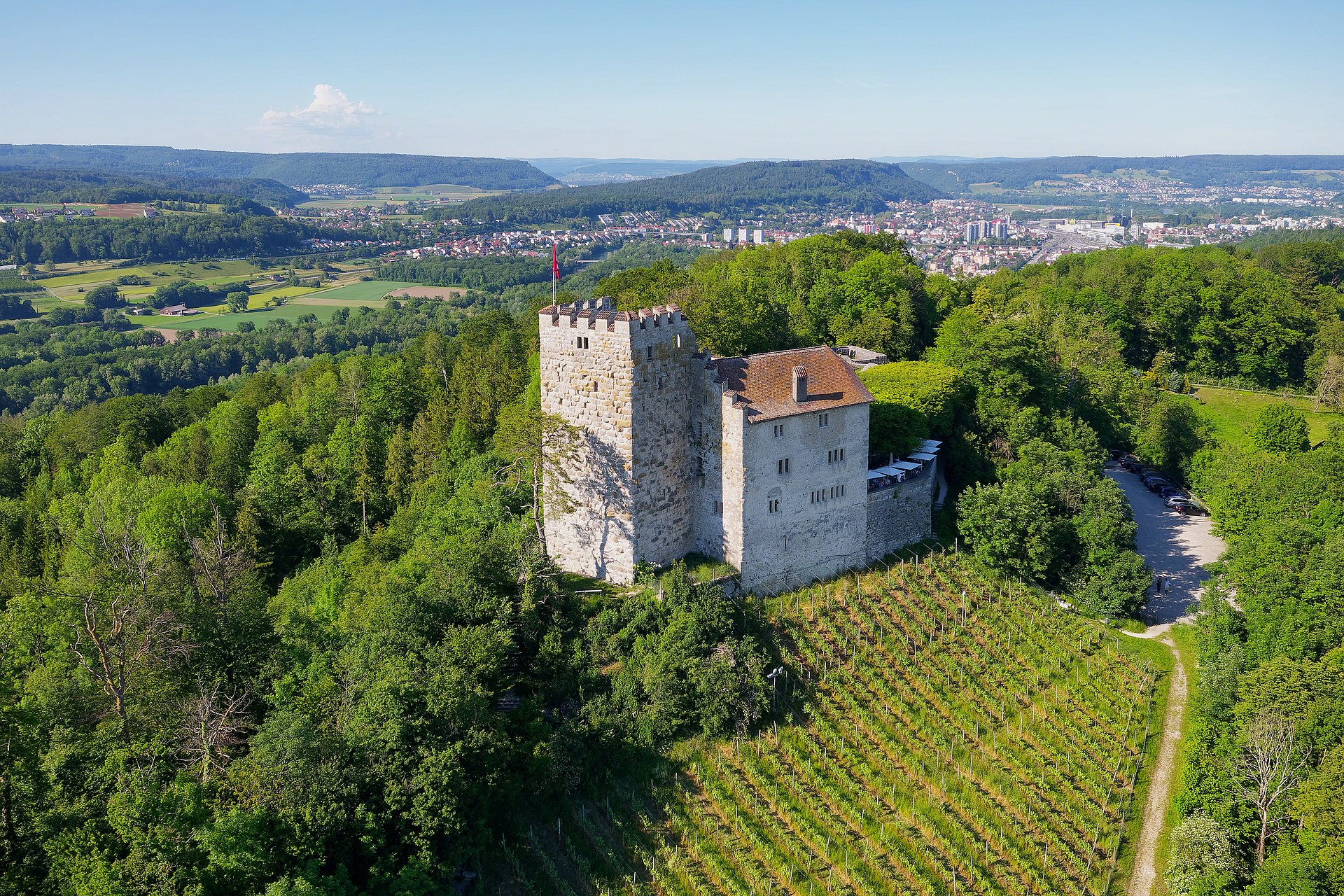
It was Radbot’s grandson Otto II who first appended the name Habsburg to his title and it stuck for over 700 years. By 1279 the family was ruling in the Duchy of Austria. Through a series of marriages the Habsburg’s managed to acquire lands throughout Europe most notably the Netherlands and then Spain when Philip the Handsome married Joanna the Mad, daughter of Ferdinand and Isabella. Their son, Charles V, ruled over not only a vast European empire, but a New World one as well, bringing immense wealth to the family. I have seen the Habsburg coat-of-arms on many monasteries and other buildings throughout Latin America.
Almost synonymous with the Habsburg Empire was that of the Holy Roman Empire of which they were elected rulers from 1438 to 1806 with very few exceptions. Here is a list of countries that at one time or another were under whole or partial Habsburg rule: Austria, Belgium, Italy, Germany, Slovenia, Hungary, Czechia, Serbia, Croatia, Luxembourg, Slovakia, Poland, Romania, the Netherlands, Spain and even Ukraine. While much of the Empire was initially centred in Spain in the 17th, 18th and 19th centuries Vienna was Habsburg’s principal domain and it was during this time that the buildings for which the city is famous such as the Belvedere and Schönbrunn palaces were built. With their vast dominions came vast wealth and much of what that wealth could acquire is on display in multiple museums and other public buildings in and around Vienna. Let’s start with the most important collection first.
The Kunsthistoriches Museum
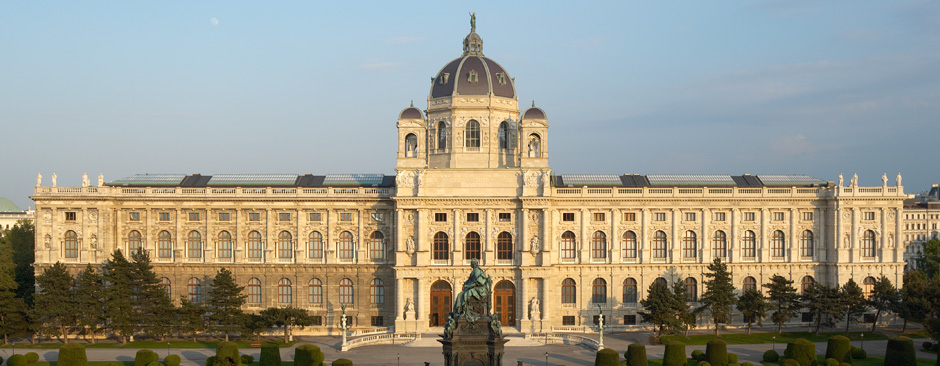
The Kunsthistoriches Museum is one of two purpose built museums that face each other in Maria Teresa Platz. The other is the Naturhistoriches Museum (Museum of Natural History) with a monumental statue of Empress Maria Teresa sitting between the two.
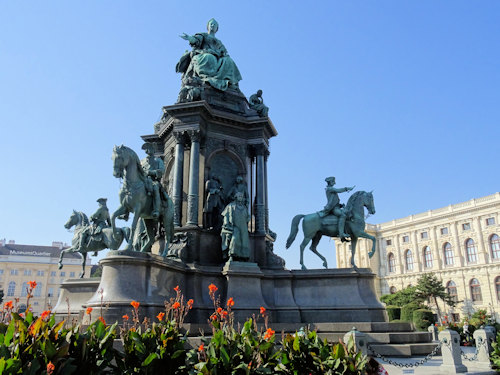
All were commissioned by Emperor Franz Joseph to show to the world the rarities that had been collected by the Habsburgs over the centuries. After twenty years of construction, the museums opened in 1891 and allowed the public for the first time to see some of the greatest art works ever produced, ranging from ancient Egypt to Greece to Rome and through the Middle Ages, Renaissance and Baroque periods.
Unlike the Prado which I visited in 2023, I did not have to buy a time sensitive entry ticket and still wait in line for almost an hour to get in only to be amidst a huge throng, none of whom were allowed to take photos. At the Kunsthistoriches I just walked up, bought a ticket and proceeded to explore, taking photos of anything that took my fancy. There were maybe a tenth the number of visitors as well. This was a museum experience worth having.
It starts by walking up a wide marble staircase to the second level where this massive sculpture of Theseus & the Centaur by Antonio Canova dominates the scene and draws the eye. Theseus was a guest at the wedding of his friend Pirithous, king of the Lapinths, as were the centaurs. Unfortunately the centaurs got drunk and tried to abduct the bride, Hippodamia. A wild melee ensued in which Theseus slew Eurytus, the mightiest of the centaurs.
In a post I did on the Borghese Gallery in Rome I concluded with Canova’s nude sculpture of Napoleon’s sister Pauline, which caused a scandal at the time. Antonio Canova was the premiere neoclassical sculptor of the late 18th and early 19th centuries and a visit to his studio in Rome was a de rigeur stop on the Grand Tour.
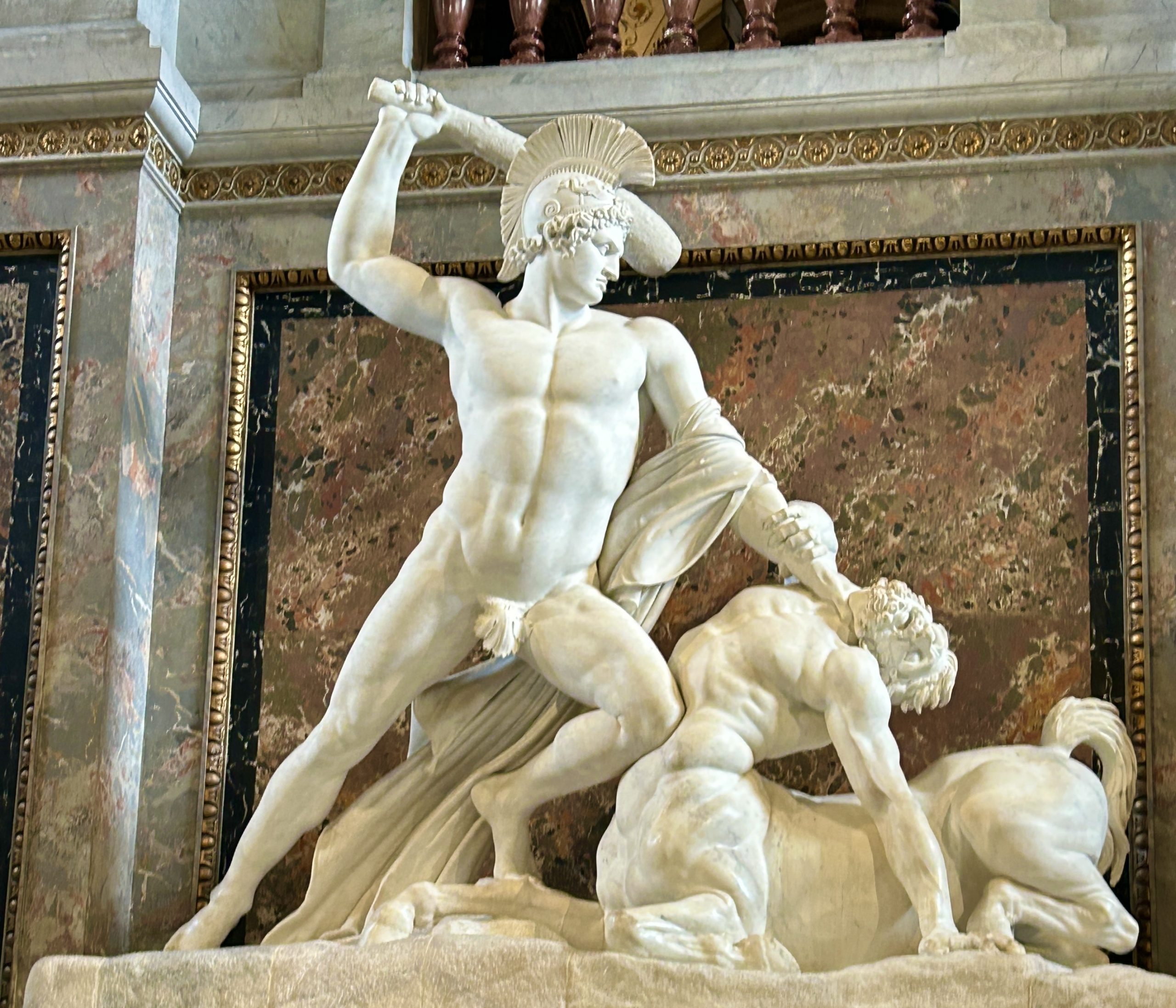
The Kunsthistoriches Museum website is among the best I have ever come across for digitally displaying the art work. If you go this link to the floor plan you can see what is in each room and then pick out any item you would like to see and then enlarge it. This is particularly useful in viewing the first few paintings I will feature. Unfortunately the detailed descriptions are only in German, but Google translate solves that problem.
The Kunsthistoriches, Vienna has the largest collection of original works by the great Flemish artist Pieter Bruegel the Elder. There are 14 of these on display in Room X on the second level. I have long been a huge fan of Bruegel who completely broke with tradition and painted ordinary people in both real and mythical themes. The amount of detail in his best works is unmatched by any artist save perhaps Hieronymus Bosch who was an influence on Bruegel. Okay let’s jump in and explore a few of these. Remember you can follow the floor plan to see and magnify each one.
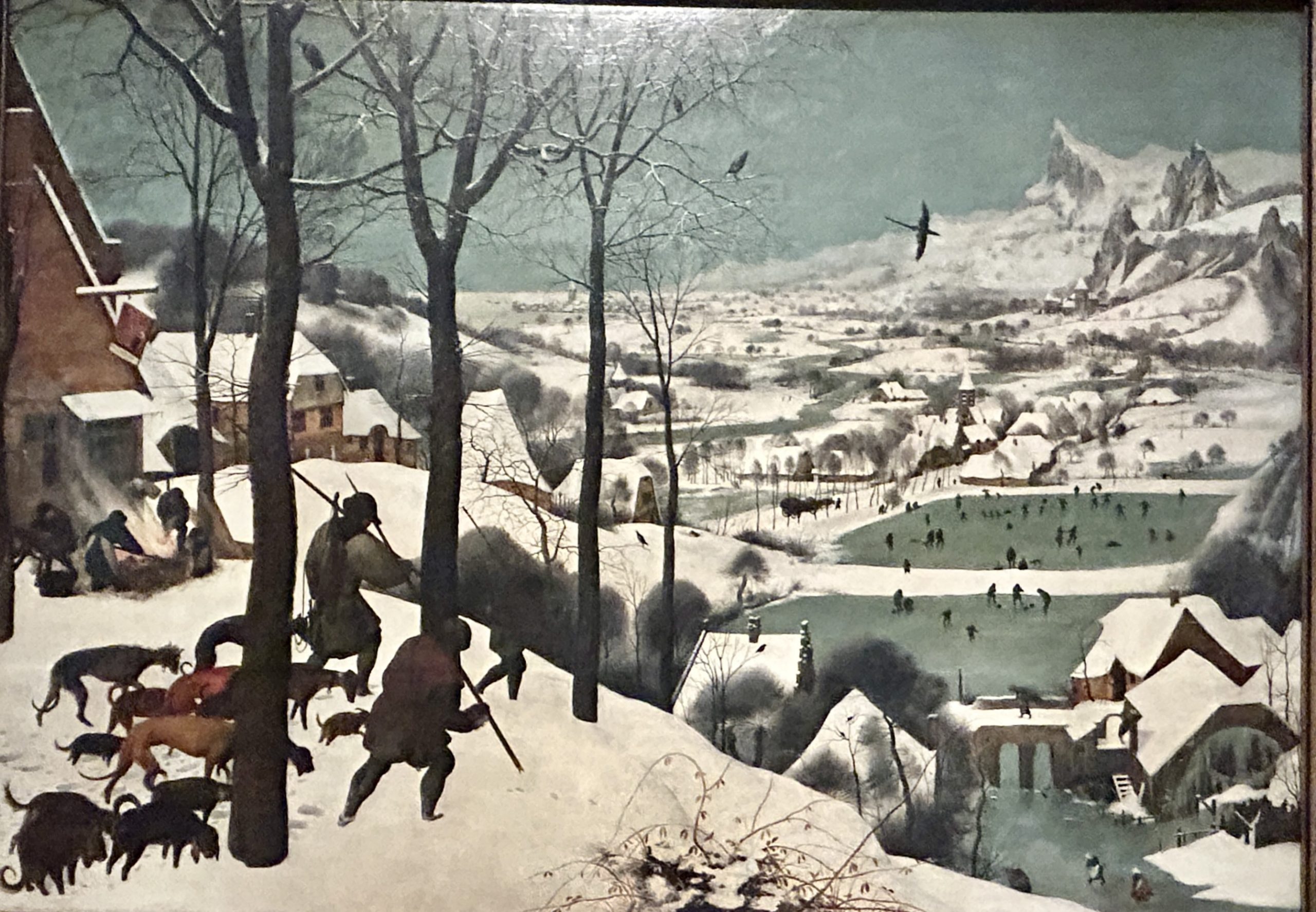
Bruegel gave us details of everyday life in 16th century Low Countries that no other artist has come close to. Here is the museum’s description of this painting.
The group of hunters, accompanied by an exhausted pack of dogs, returns to the village below. Only a single fox hangs from one of the spits slung over his shoulder. To the left, a pig is being prepared to be roasted over an open fire. Amusing details such as ice skating on frozen ponds have contributed to the painting’s enormous popularity. But it is not the sum of the details but the overall effect that makes it important. Bruegel evokes the impression of permanent cold with mastery and consistency.
But what I have long noticed about this painting before seeing it in person, is that it depicts two well known sports that are claimed to have been invented elsewhere. I’m talking about hockey and curling. If you look closely to the figures on the frozen pond you can clearly see a hockey stick and curling stones. I hate to break it to my father’s home town of Windsor, Nova Scotia, but they were playing hockey in Holland over 250 years before soldiers laced up on Long Pond in 1800.
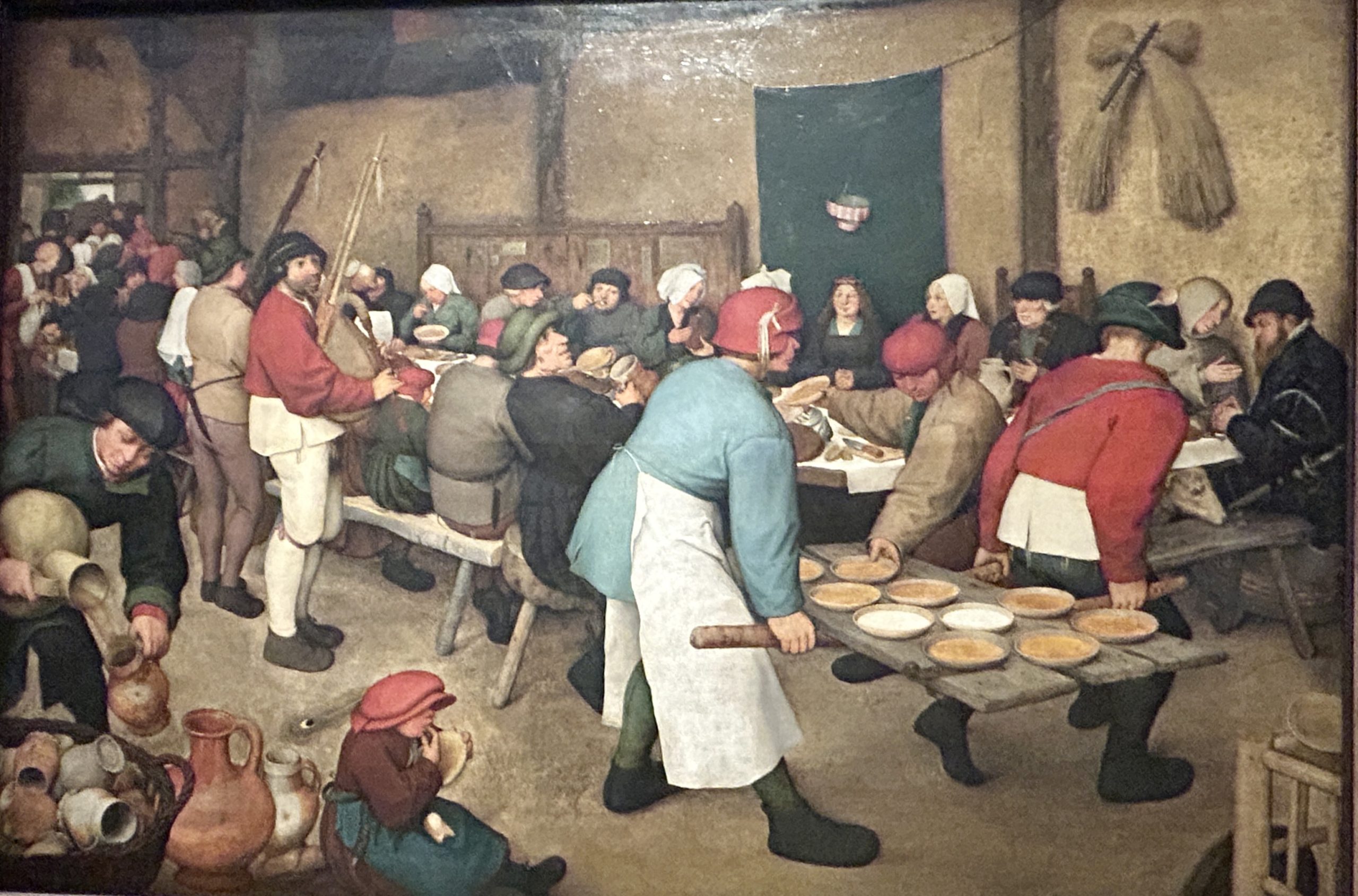
This is one of Bruegel’s most famous genre paintings depicting a peasant’s wedding thusly:
The apparent “snapshot” is carefully composed. Without any allegorical meaning, the picture realistically depicts a Flemish peasant wedding. The bride sits in front of the green curtains, a paper crown hangs above her. According to Flemish custom, the groom was not present at the wedding table. A notary with a beret, a Franciscan monk and the landowner with a dog (far right) can be seen; the porridge dishes carried in on a hinged door are extremely simple, and the posture and walking motif of the bearers are also memorable.
Again if you look closely another myth is broken. The musician is clearly holding a bagpipe. Actually bagpipes have been known since Egyptian times so it’s no slight to the Scots that the Dutch were piping perhaps before they were.
I’ll feature one more Bruegel before moving on and then put a few more in a gallery.
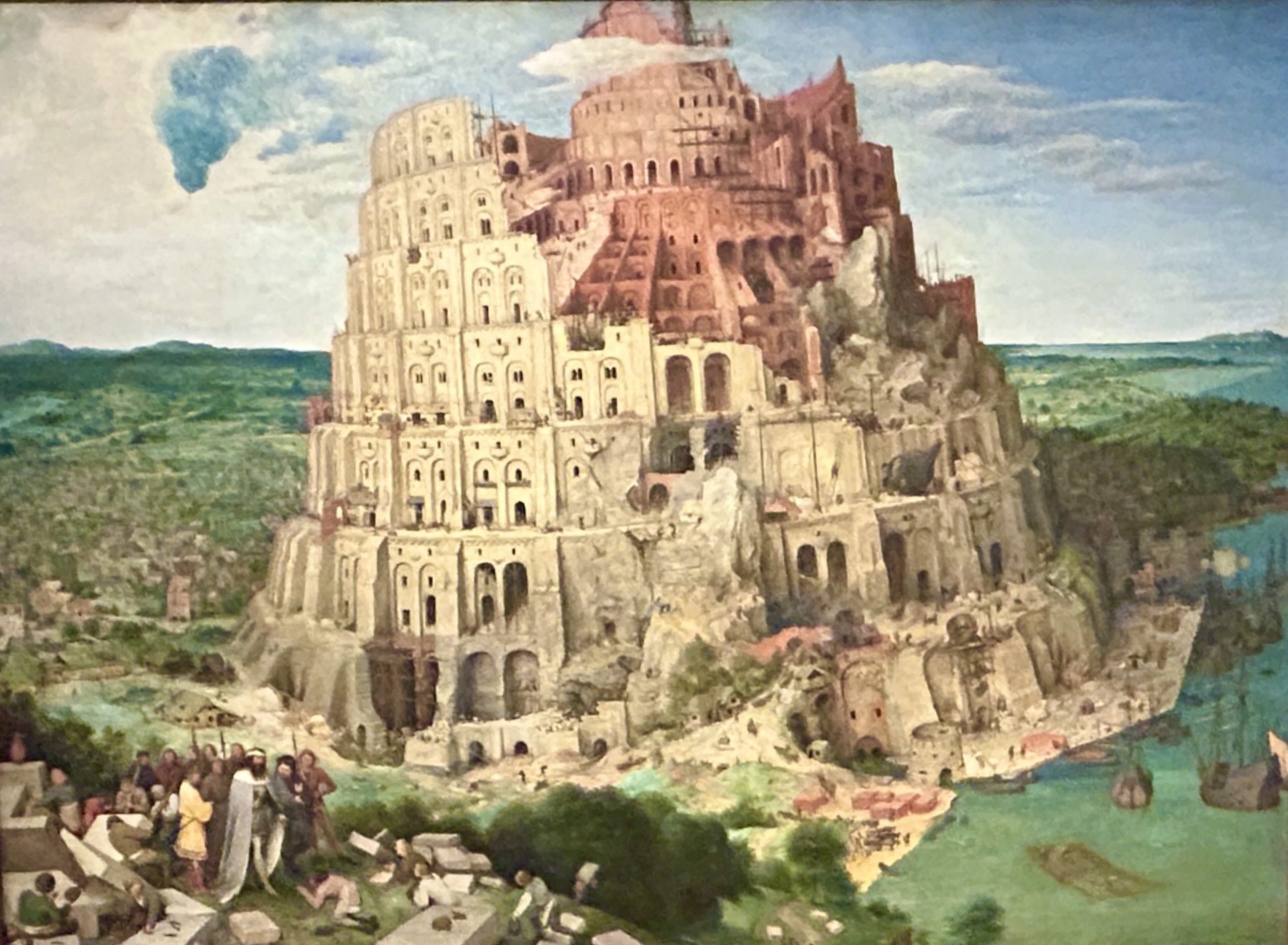
This is perhaps the most famous depiction of the Tower of Babel in western art which has inspired great debate among architects as to whether something like this could actually be built. Many think it actually could be, which is a testament to Bruegel’s understanding of engineering and construction techniques.
Bruegel’s monumental composition became the most famous classic of tower building depictions, copied and varied many times. The impressively tiny, Flemish-looking buildings of the port city compared to the tower provide the scale. Bruegel describes a vast number of construction and craft processes with meticulousness and encyclopedic interest. In the stone outer shell he mixes antique and Romanesque architectural elements.
Note the subjects bowing before Nimrod, the king to whom the attempt to build the tower is ascribed by the Jewish historian Josephus. This painting is definitely worth zeroing in on using the museum website. The details that emerge are astounding.
The Kunsthistoriches Musem, Vienna also has important works by another of my favourite artists, the scoundrel and genius known as Caravaggio. You’ll find these in Gallery VI.
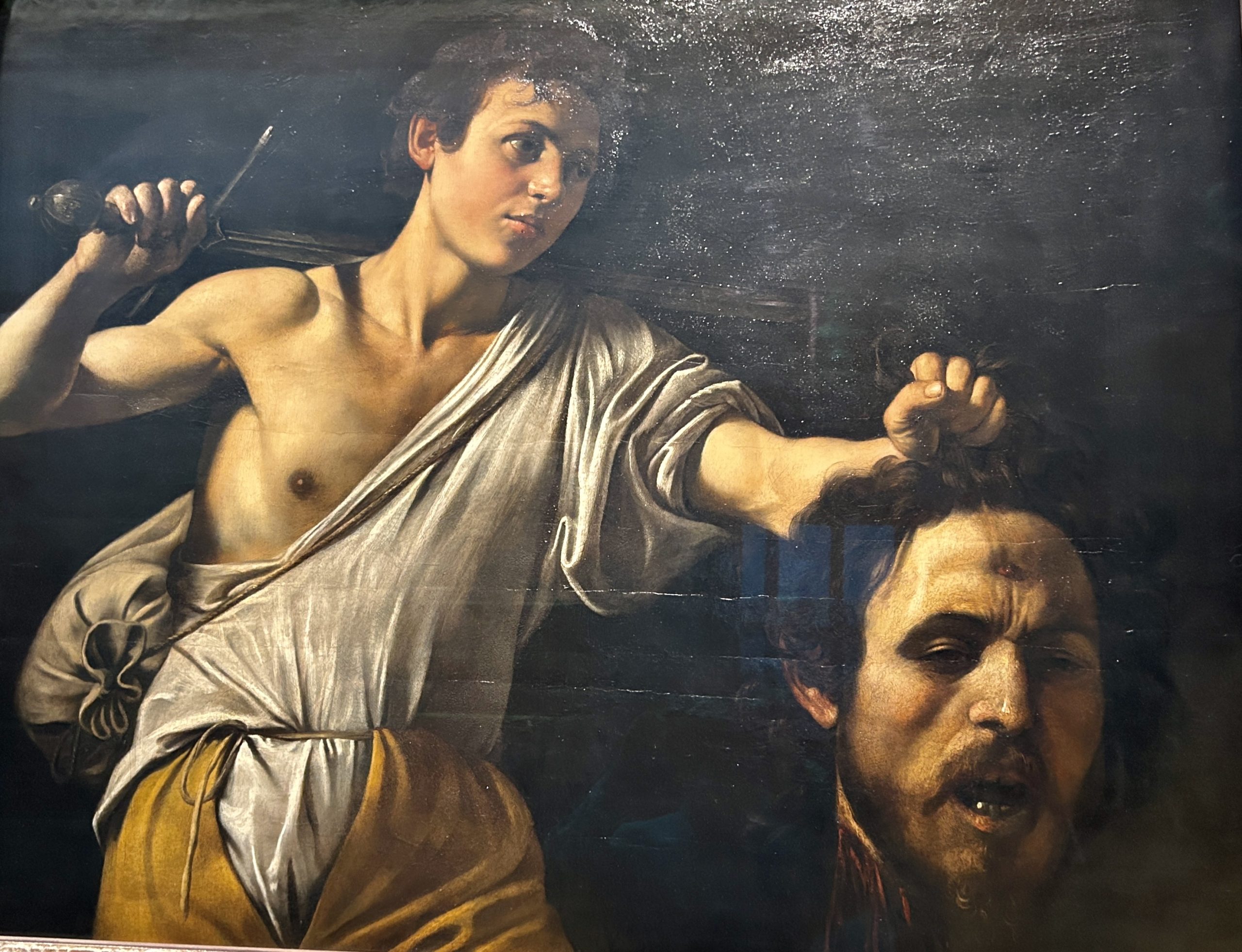
Caravaggio had a morbid attraction to the theme of beheadings, depicting not only Goliath’s severed head as in this painting, but the decapitation of Holofernes, John the Baptist and Medusa in others. The theme of David and Goliath is one of the great human allegories and nobody did it better than Caravaggio. Note the mark on Goliath’s head made by the stone that felled him.
Caravaggio succinctly summarizes the biblical story of David’s victorious battle against the giant Philistine general Goliath and interprets it in a personal way: a melancholic victor is shown who seems to be thinking about himself and his sacrifice. Despite the smooth surface (wood as a painting surface is unusual for Caravaggio!), the stylistic similarity to the “Madonna of the Rosary” and other works by Caravaggio from his Roman period is evident.
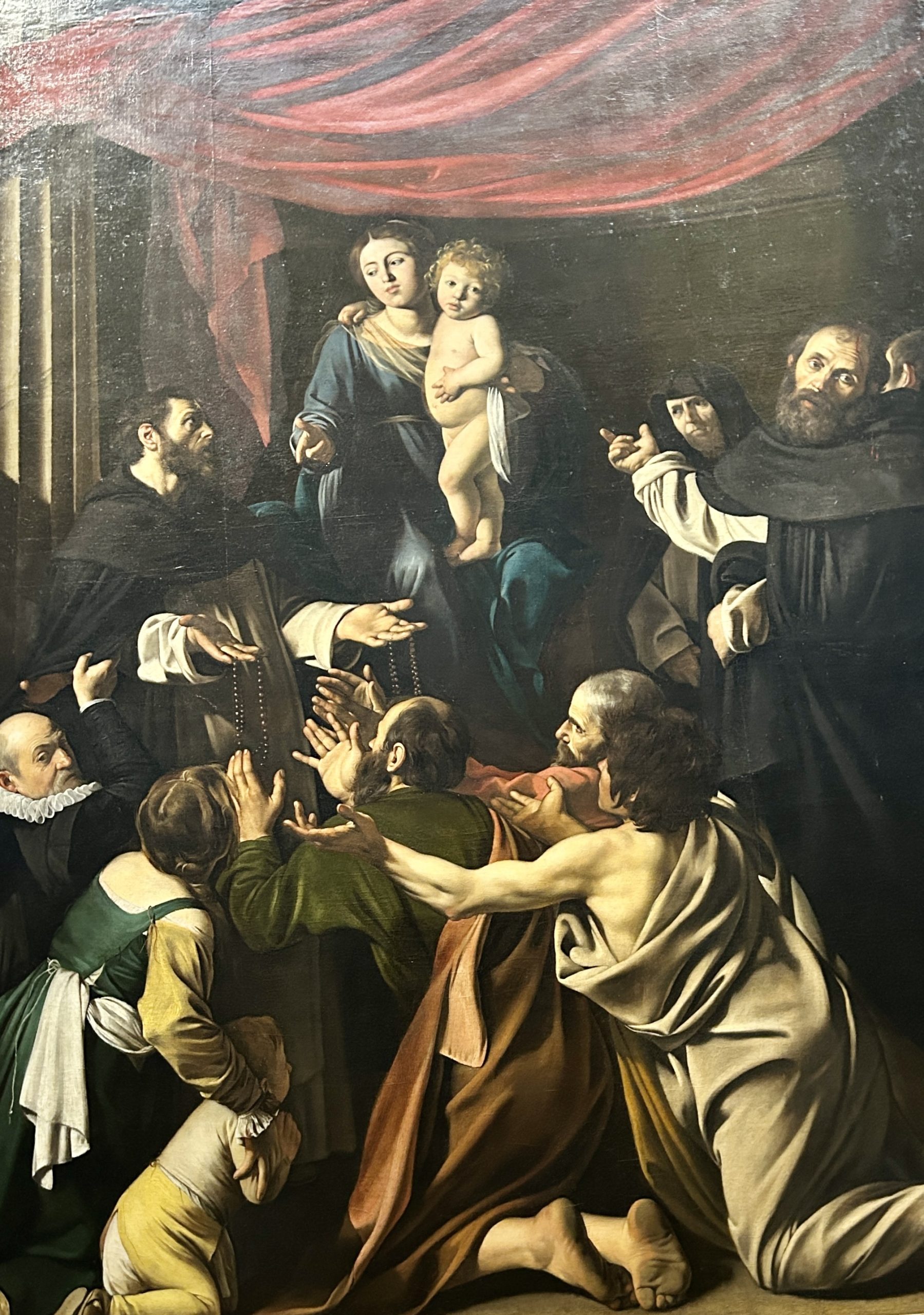
The reference to the Madonna of the Rosary is to this painting which is in the same gallery. It’s not one of my favourites by the artist, but I include it because the face of the baby Jesus is the same one that appears as Bacchus and other homoerotic paintings by Caravaggio that are thought to perhaps be his own face.
I include the third Caravaggio in the Kunstshistoriches Museum, The Crown of Thorns in the gallery below. I featured a number of his works in my Borghese Gallery post as well and if you want to see some of his best works you definitely need to go there.
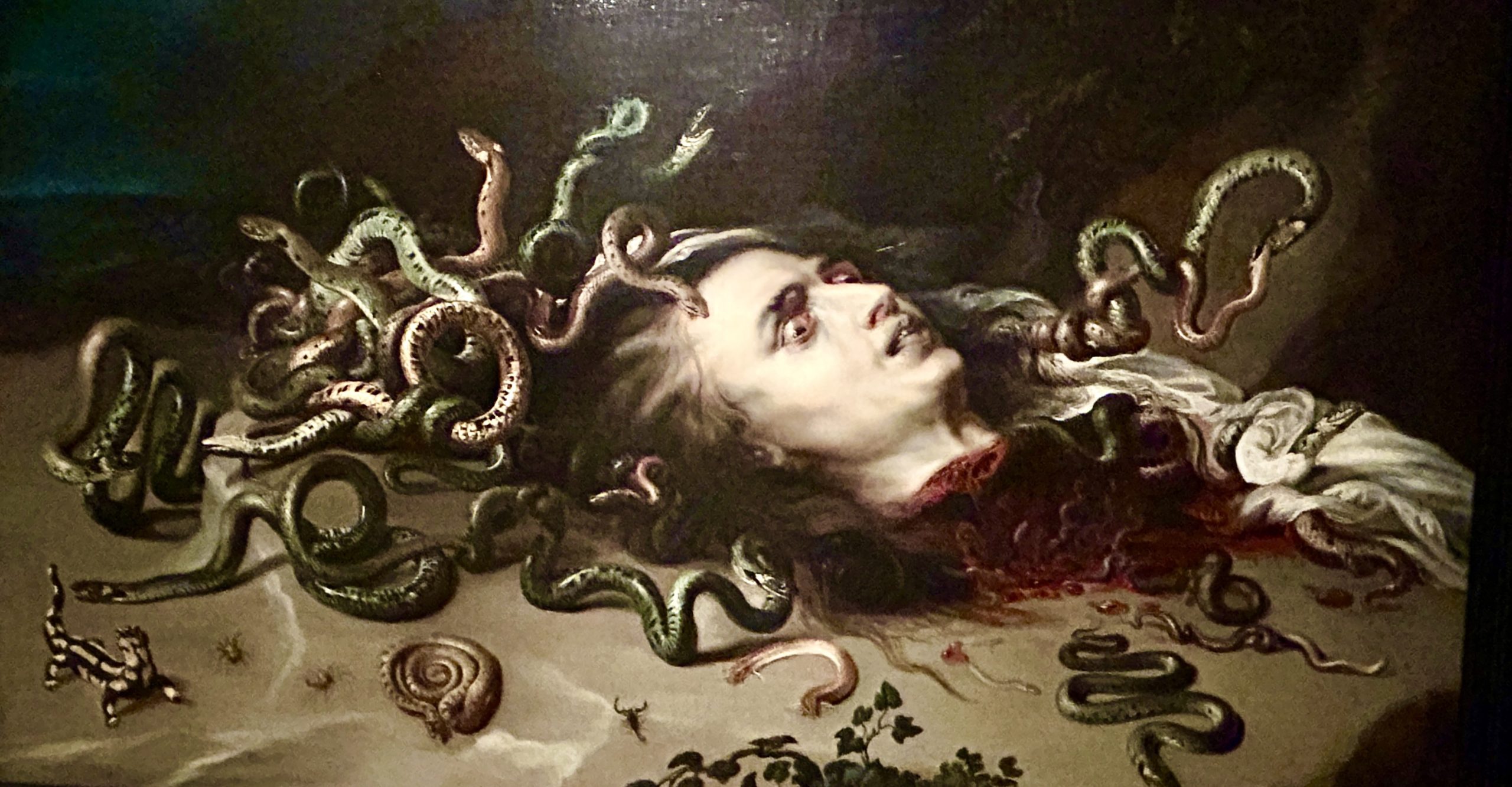
Peter Paul Rubens was perhaps the most famous artist of his day with a prodigious output in an amazing variety of styles and genres. I’m not a big fan of his religious paintings of which the Kunsthistoriches Musem has a lot, but I do like his allegorical works such as the one above. The museum website describes what’s going on here.
Perseus treacherously killed the snake-haired Medusa, who had turned humans and animals into stone with her gaze (Ovid, Metamorphoses). The blood dripping from her severed head turned into snakes. At the time of Rubens, the depiction was understood politically or allegorically as a sign of the victory of Stoic reason over the enemies of virtue. The drastic depiction with the wide-open, bulging, bloodshot eyes was created by Rubens himself, in collaboration with his workshop; the creatures were attributed to the specialist Frans Snyders.
This is a truly creepy painting that is quite jolting to see in person. I’ve included a few other of Rubens’ work in the gallery below. On the museum website you can see these and more in Kabinett 20.
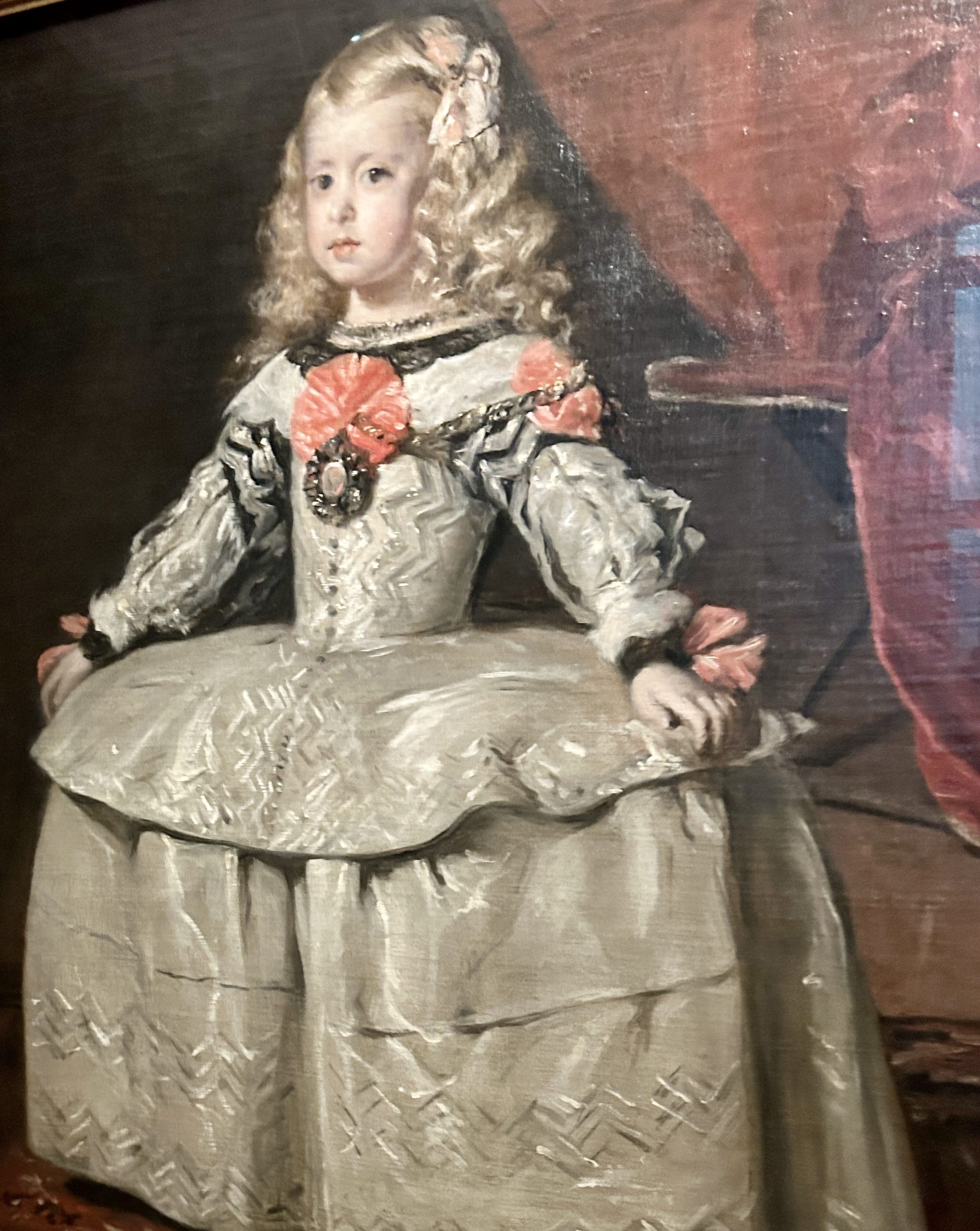
No painter is more closely associated with the Habsburgs than Diego Velasquez who painted literally dozens of portraits of them and scenes from the court of Philip IV of Spain. You’ll find some of the best known of these works in Kabinett 10 including this portrait of Margarita Teresa, daughter of Philip IV. She is the central figure in his most famous work Las Meninas, which is one of the reasons one puts up with the hassle to visit the Prado.
I’ve included more of Velasquez’ work in the gallery below.
I’ll feature one last item from the Kunsthistoriches Museum, Vienna and the one most closely associated in my mind with the place before I ever went there. The Habsburg’s collection of objects d’art is truly mind boggling and no piece epitomizes that collection more than Benvenuto Cellini’s famous golden salt cellar found in Gallery XXIX.
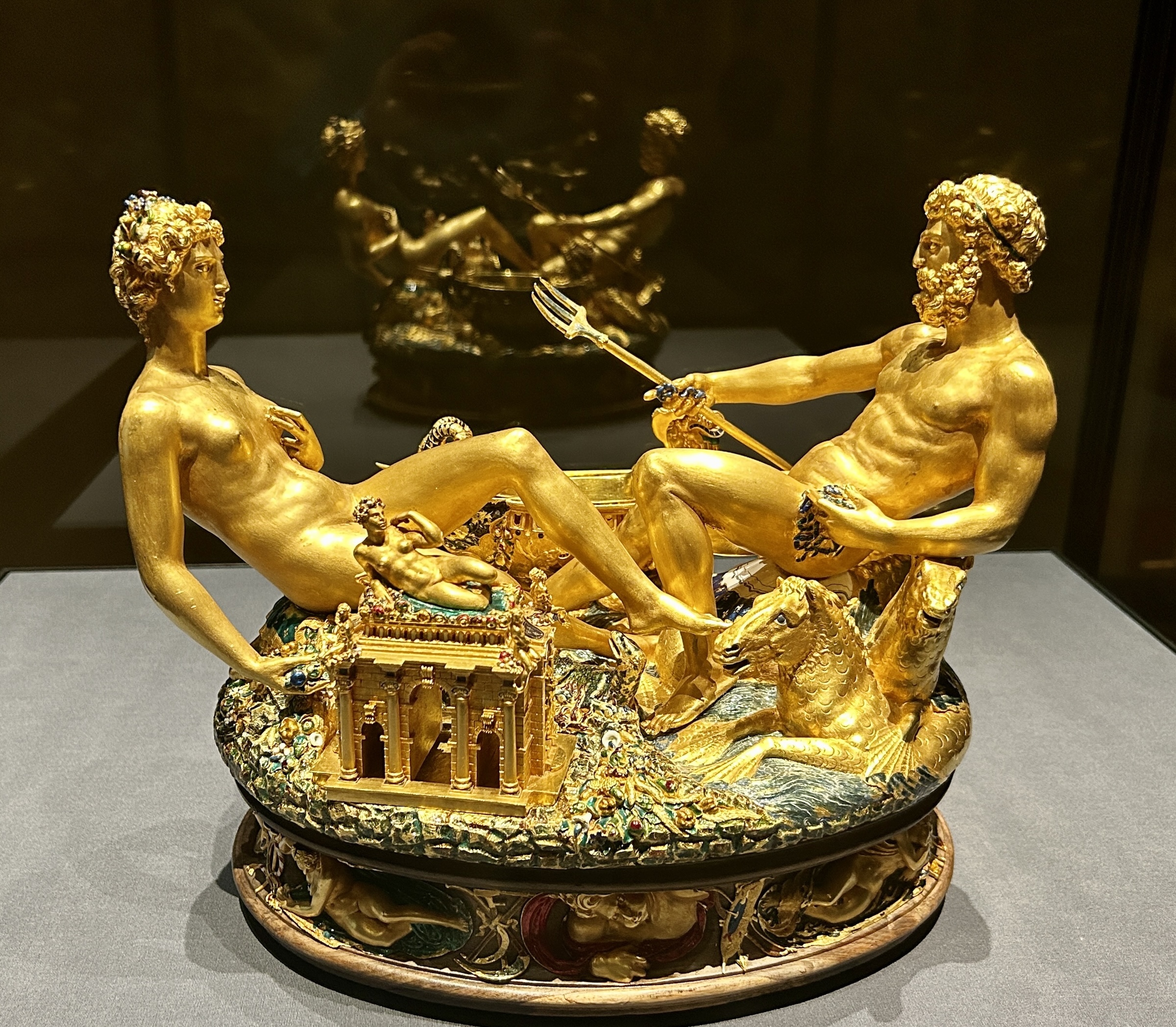
Commissioned by Francis I of France, it depicts Neptune and Tellus the Roman goddess of the earth along with the four winds, symbolizing the cosmos. Not your ordinary salt and pepper shaker. Despite its fame, there were so few people in this room filled with literally dozens of intricate objects d’art that I had it all to myself. And there are seventeen other rooms displaying similar objects. You could spend a day in each one and still not pick up on all the intricacies.
Here is the gallery I promised with just a few more works I found worthy of photographing at the Kunstoriches Museum, Vienna. Double click to open one and double click again to enlarge. Better yet got to the museum website and get more details on each work there by using the search function.
- Arcimboldo – Summer
- Bronze Neptune – Unknown Artist
- Dionysius
- Breugel – Procession to Cavlary
- Bruegel – Massacre of the Innocents
- Bruegel – Return of the Herd
- Bruegel – The Peasant Dance
- Bruegel – War Between Carnival & Lent
- Caravaggio – The Crown of Thorns
- Egyptian Heads
- Frans Hals – Portrait of a Young Man
- Objets D’Art
- Raphael – Virgin of the Meadows
- Rubens – Helen Fourment
- Rubens – Samson & Delilah
- Rubens – Self Portrait
- Triumph of the Renaissance – ceiling of the museum
- Velasquez – Infanta Margarita in Blue
- Velasquez – Infanta Maria Teresa
- Velasquez – Philip IV
I could have written an entire post on Vienna’s Kunsthistoriches Museum and perhaps I should have, but for now I hope I have given some idea of why it is one of the world’s great art museums and a must visit while in Vienna.
On the second day I returned to the Museumquartier and spent a good deal of time just walking and enjoying more of the monumental architecture of Vienna including the neoclassical Austrian parliament building with its statue of Athena, goddess of wisdom fronting it. If only that wisdom was in fact imparted to our law makers!
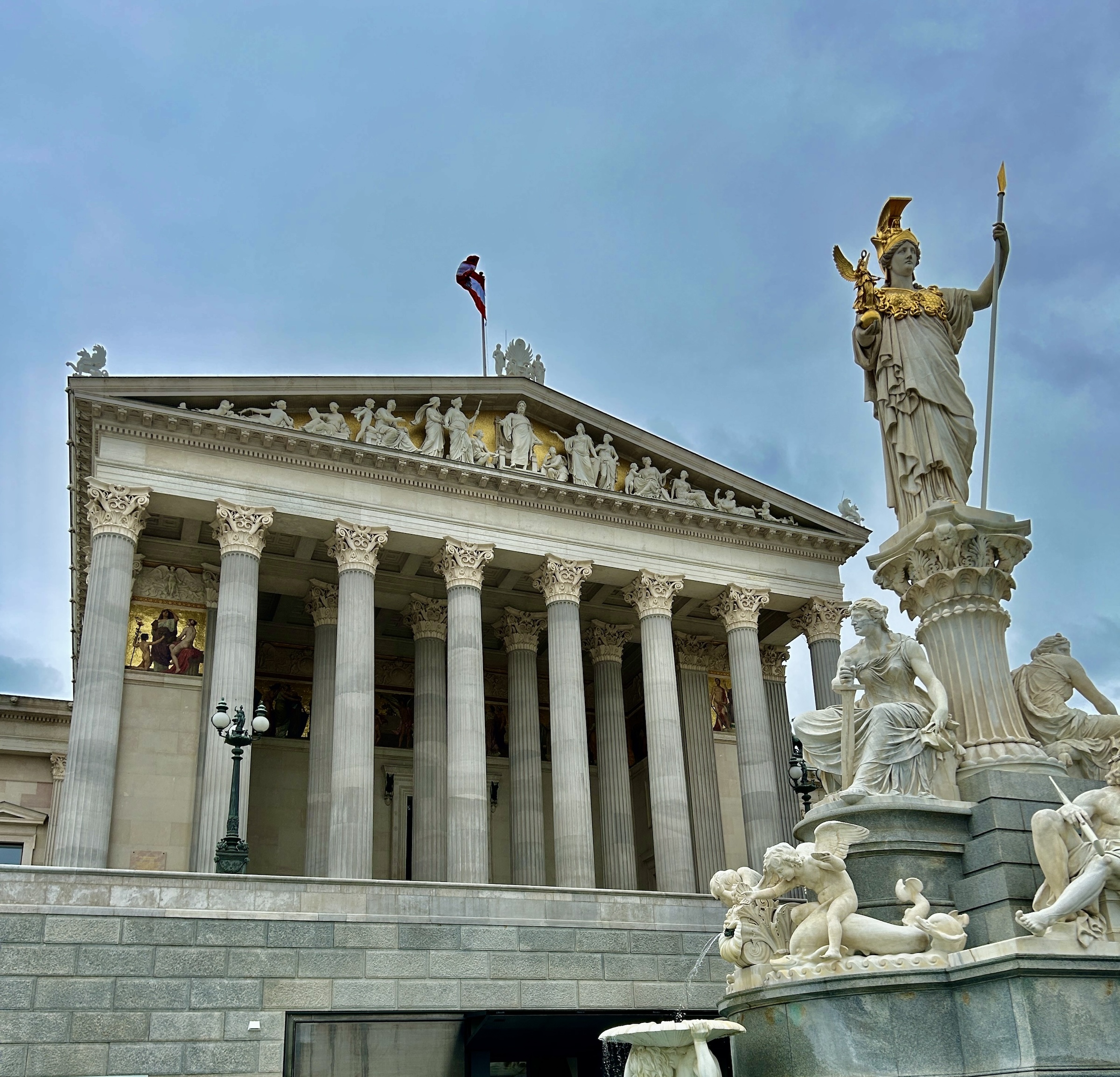
From here I made my way to the next museum on the agenda.
The Leopold Museum
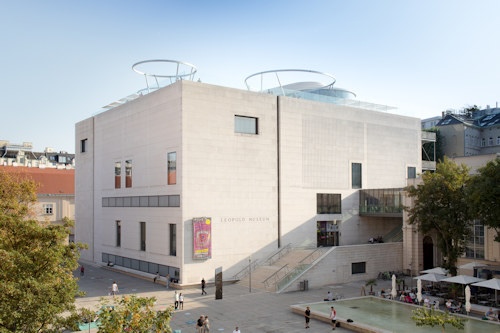
If your tastes run more to the modern than the classical art world, then Vienna has something very special that is unique to the city. Between 1890 and 1910 Vienna saw an explosion of artistic fervour that crossed the lines from the decorative arts to architecture to painting and sculpture and even music. Viennese Modernism is the accepted term for this movement that saw the likes of Gustav Klimt, Egon Schiele and Oscar Kokoschka emerge. While these are the familiar names, there were many others whose talent was recognized by Rudolph and Elisabeth Leopold who were patrons of this movement when ‘traditional’ art critics were belittling the works of these artists as childish and obscene. Today they are recognized as geniuses with Klimt rising to almost god-like status. His ‘Lady with a Fan‘ sold for over $108 million in 2023, the highest price ever obtained for a work of art sold in Europe and it would not even be considered one of his best works. Thankfully they are pretty well all in public collections thanks to far sighted people like the Leopolds.
The Leopold Museum is in a rather unfortunate looking box in the Museumquartier where it is distinctly out of place with the surrounding buildings. I suppose this was the intention by the architect; to break with tradition just as the Viennese Modernists did, but to me, it doesn’t work. Anyway it’s not what’s on the outside that counts as the saying goes, and I guess that I can forgive the look of the exterior considering what’s inside. So let’s continue our whirlwind tour of Vienna by starting with a few paintings by Egon Schiele.
If there ever was one person who personified the term ‘tortured artist’ it might be Egon Schiele, although Van Gogh would probably beat him out in most people’s minds. Desperately wanting to be an artist since he was a child, Schiele never found the acceptance he craved until 1918 when he had a very successful exhibition at the Vienna Secession. Then, just as he was hitting his artistic stride he died in the Spanish flu epidemic of 1919 at only 28 years old.
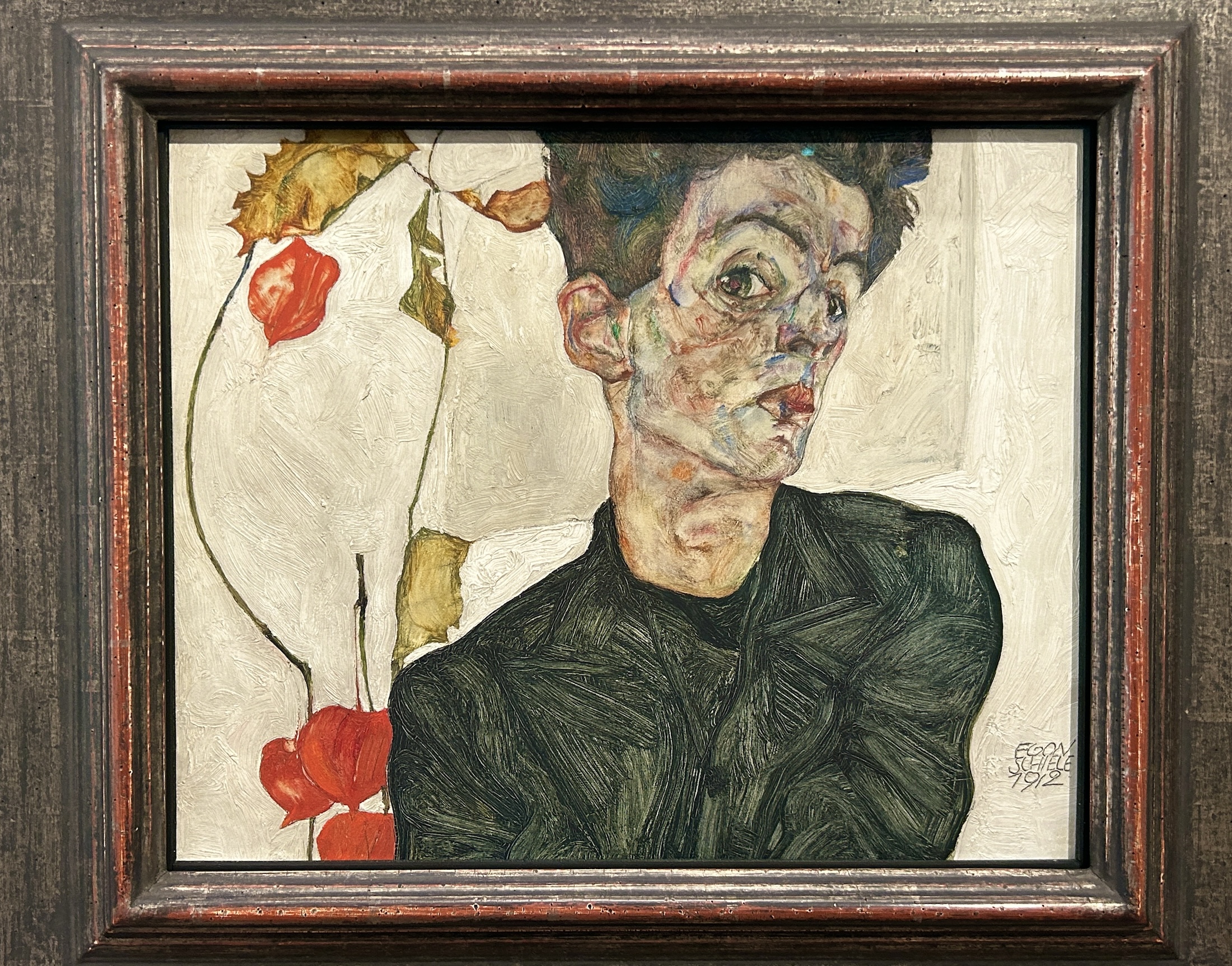
Few people took to his moody self-portraits of which this is one of the most famous. It is eerily compelling as are most of the Schiele paintings from his pre-WWI period. The Leopold Museum has forty-three Schiele paintings, by far the largest collection anywhere and if you want to get an appreciation of this tortured soul you need to come here. I arrived ten minutes before opening and there were only about a dozen other people waiting in line. When it opened I went straight to the Schiele galleries and for about fifteen minutes I had him to myself.
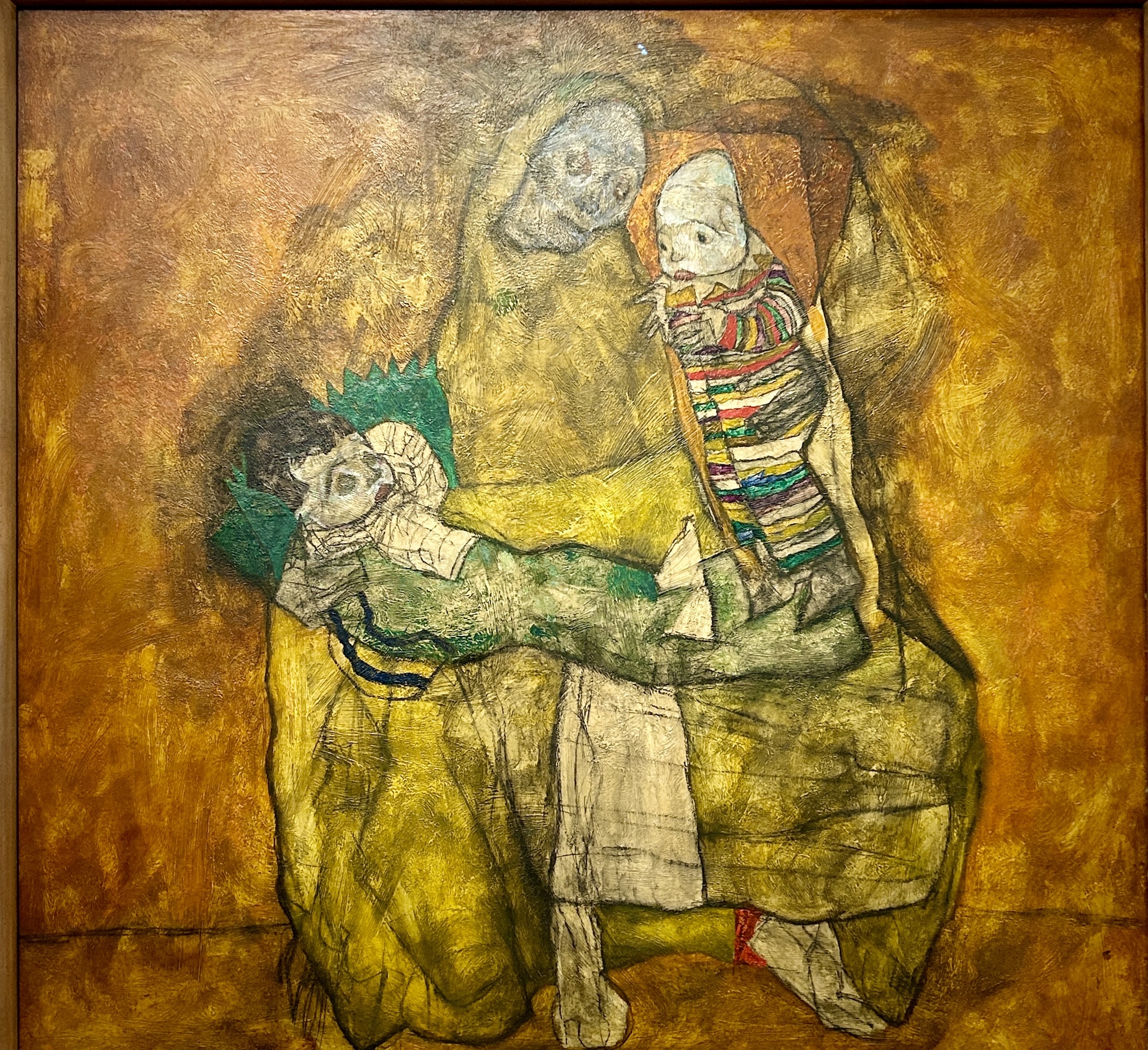
Schiele did not have a good relationship with his mother and it comes out in a number of paintings depicting mothers and children. If there was ever a way of a son saying to his mother “You’re dead to me” in a painting, this is it.
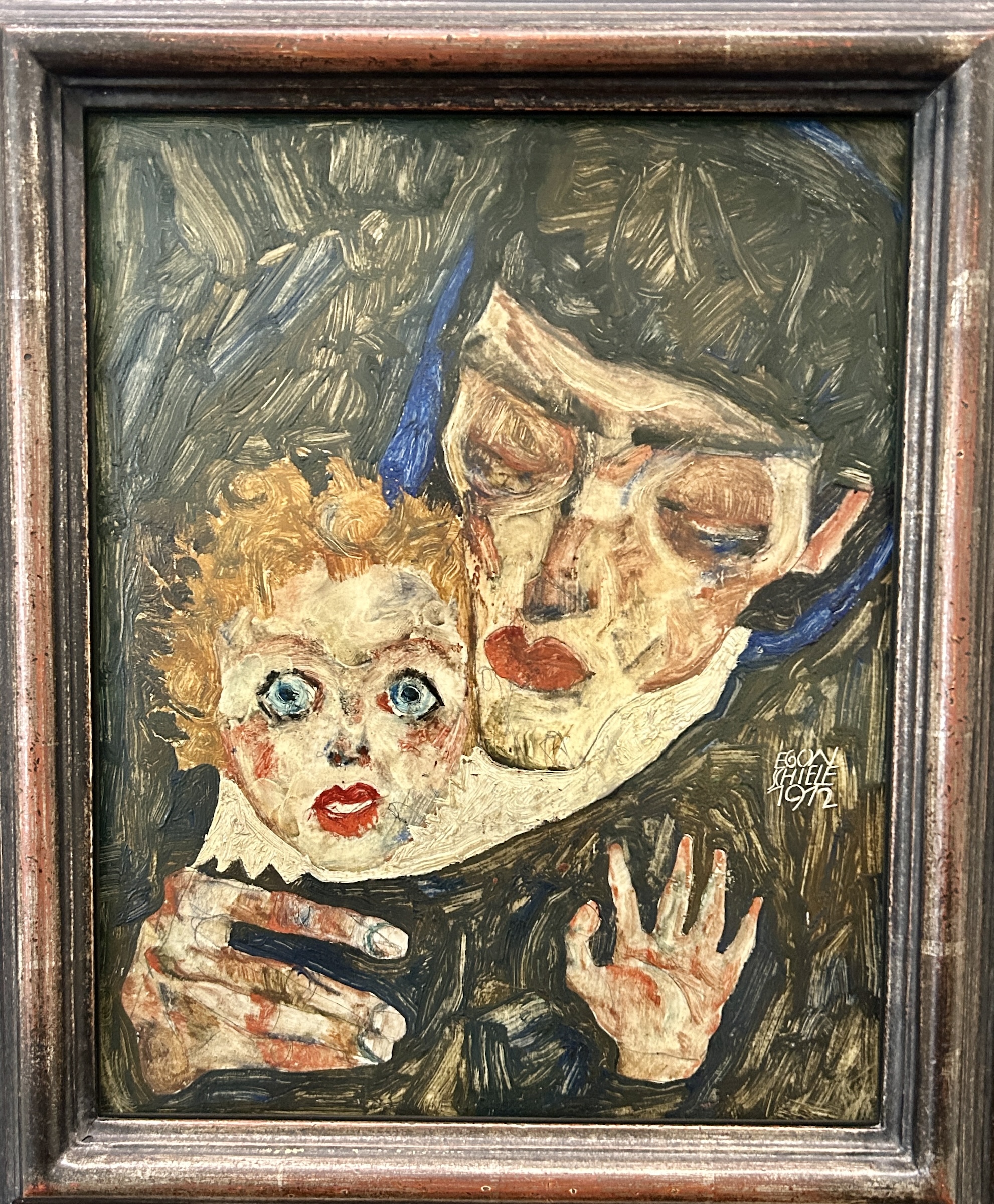
Or how about this? It’s almost like the child equates his mother’s touch to sticking his finger in a socket.
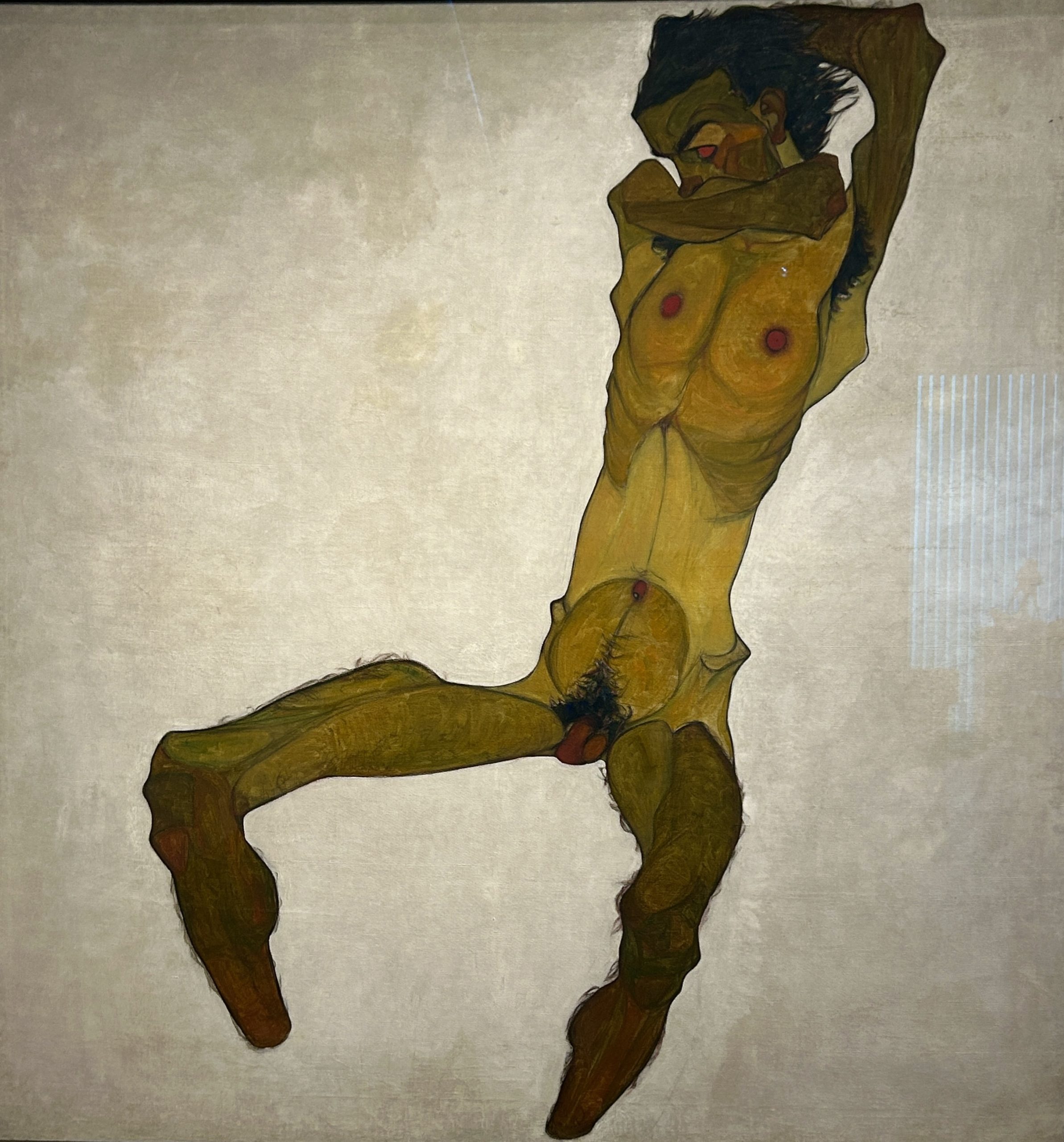
Schiele had a difficult time with his sexuality that biographers still have not come to grips with. Was he bi-sexual, straight or maybe even trans? Paintings like the one above only added to the confusion. Viewing Schiele’s works at the Leopold won’t give you a warm and fuzzy feeling, but in a way, like Van Gogh’s self portraits, you do appreciate the underlying genius of the man.
I’ll add a few more of Schiele’s painting to a gallery that follows.
Gustav Klimt needs no introduction, so I won’t. Most of his best known paintings in Vienna are on display at The Belvedere, but the Leopold has several including this absolutely stunning and chilling allegorical painting, Death and Life.
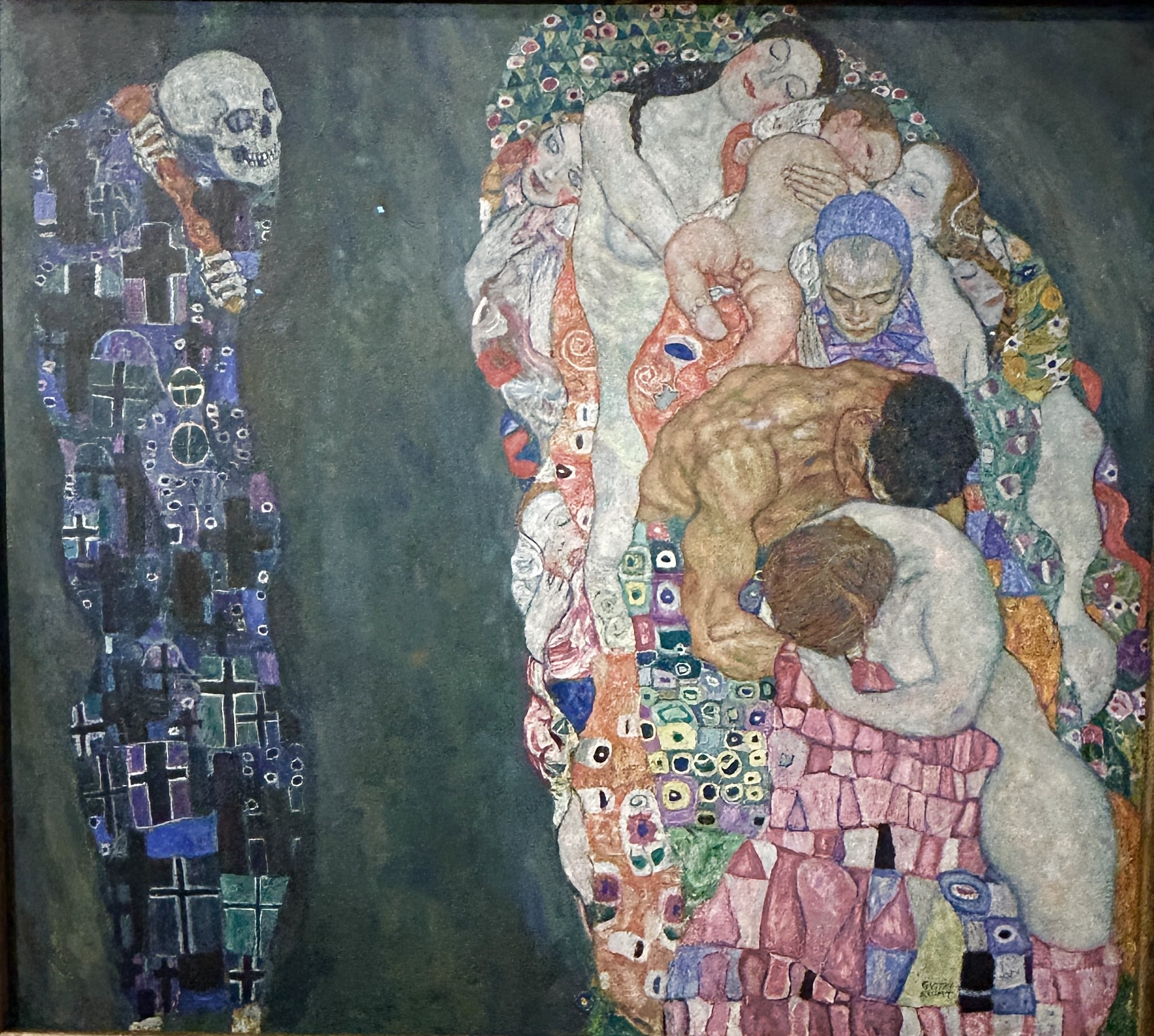
.It took Klimt seven years to complete this work to his satisfaction and I’m glad he took his time.
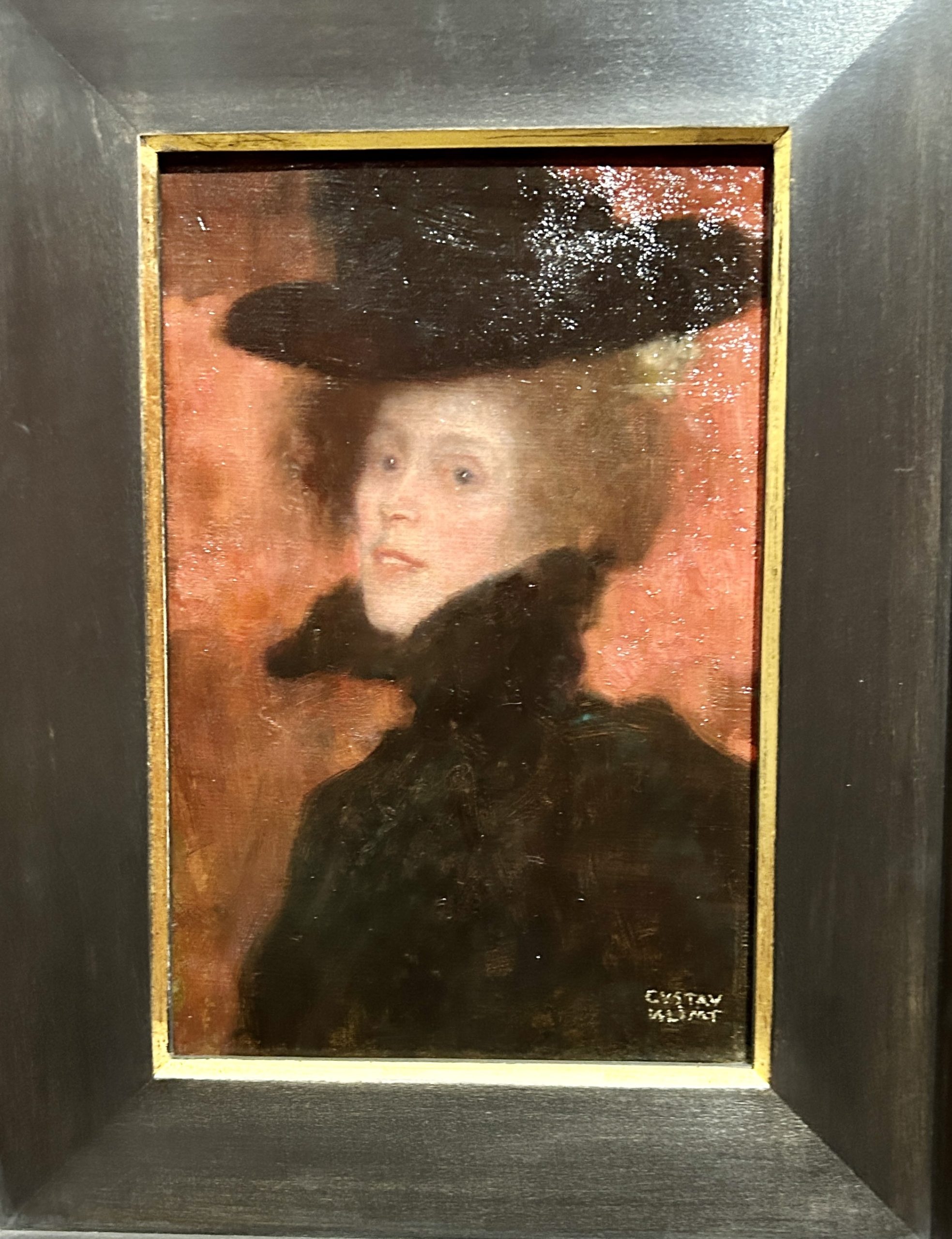
This is one of many versions of this painting that Klimt executed. Most of the others are studies or black and white drawings. This one exudes a brightness and intensity of expression that the others don’t. I’ll include a few more Klimt’s in the Leopold gallery, although they do not reflect his mature style.
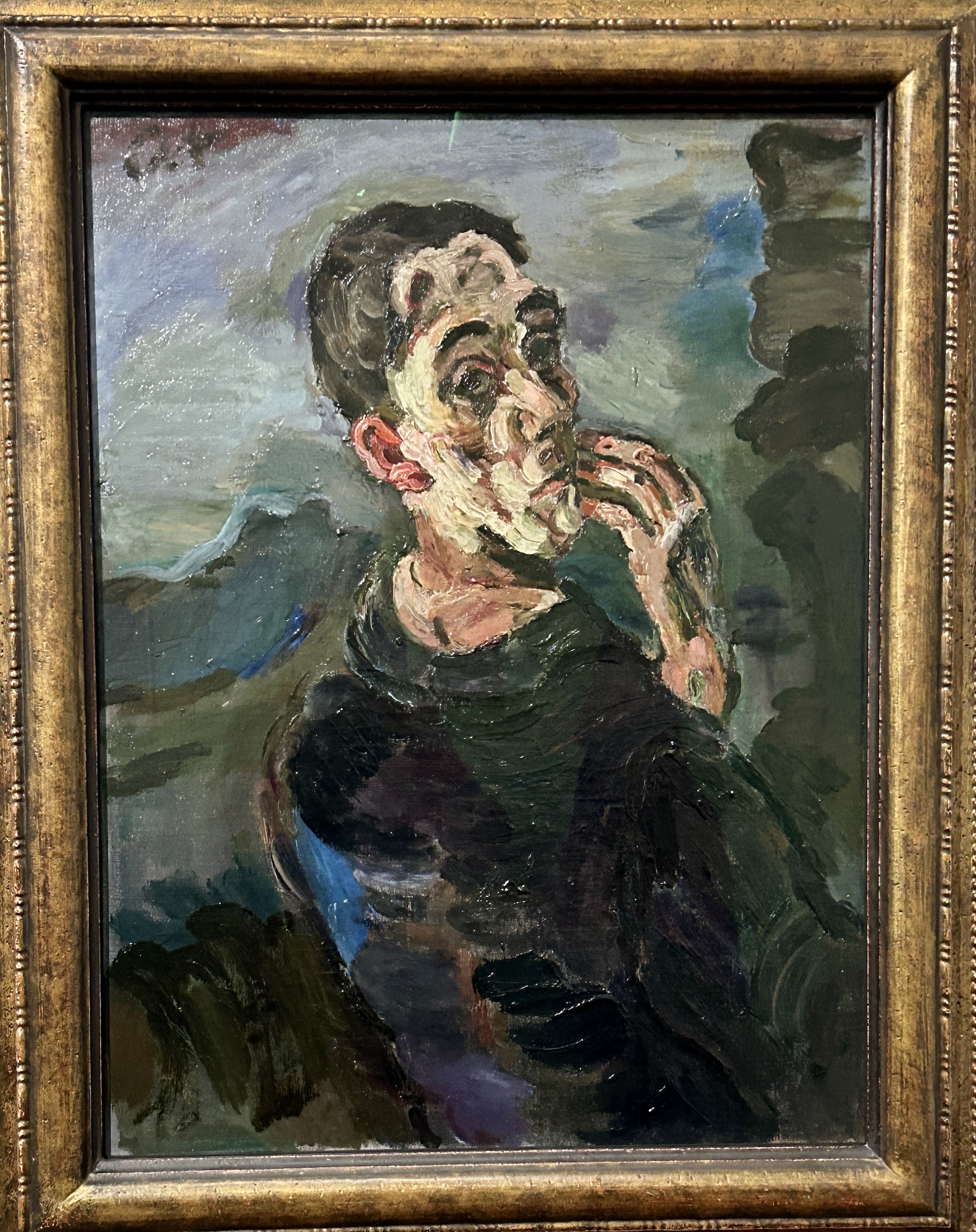
Oskar Kokoschka was the opposite of Egon Schiele, living to be almost 100 years old and living in many different places throughout his long life so there is no shortage of his works to be found around the world.
This artist first came to my attention not through his paintings, but his iconic posters. Kokoschka was also a poet, playwright and novelist, none of which earned him much acclaim, but his posters advertising his plays are much more famous than the plays which is quite the irony.
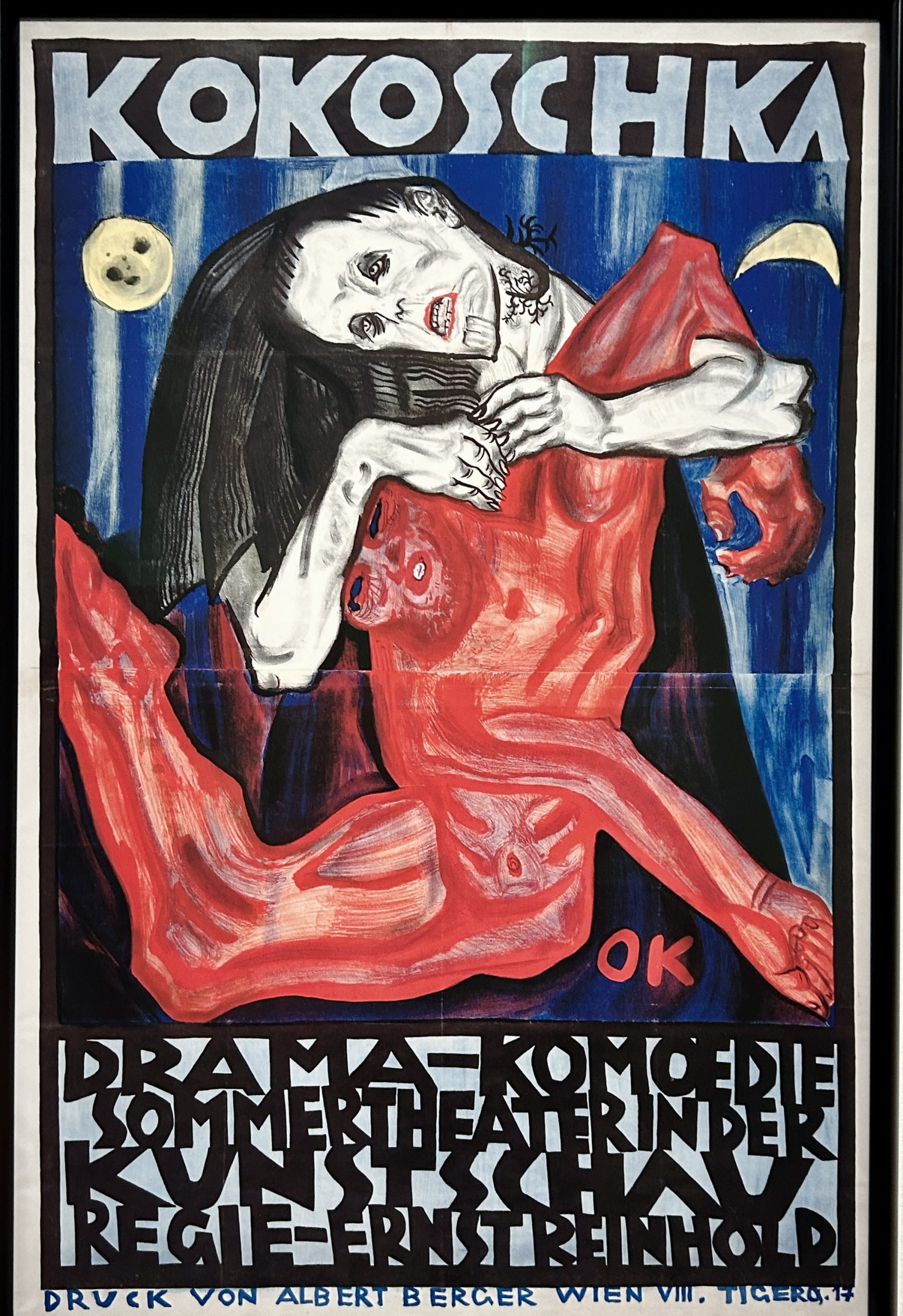
One of the lesser known members of the Vienna Secession, as the group founded by Klimt and others was known, Otto Friedrich never attained the success of Klimt and others, but this is an alluring portrait of a self-confident woman with a come hither look in her eyes.
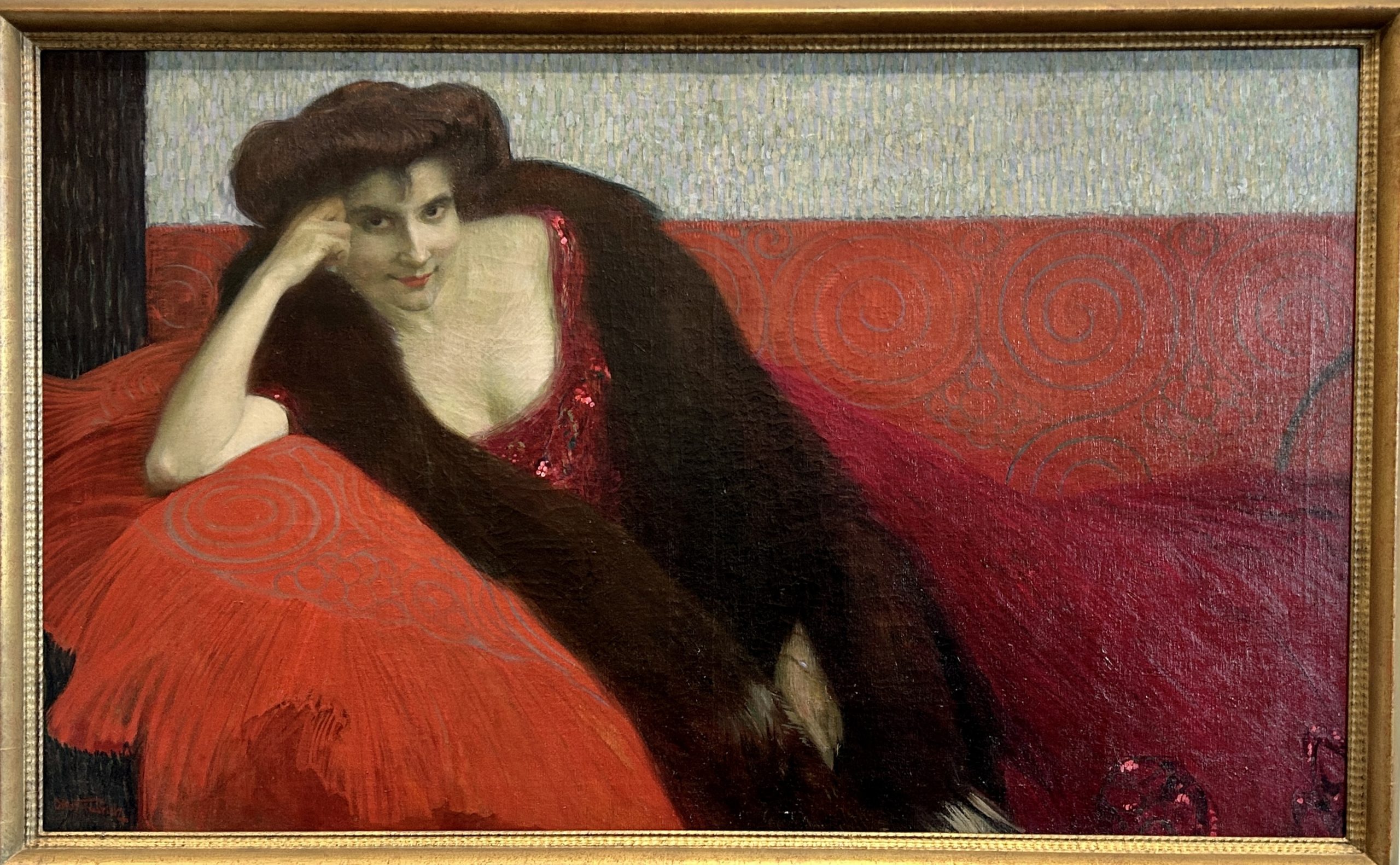
The Leopold Gallery contains far more than just paintings. There are rooms decorated with the furniture associated with Viennese Modernism of which this gorgeous armoire is but one example.
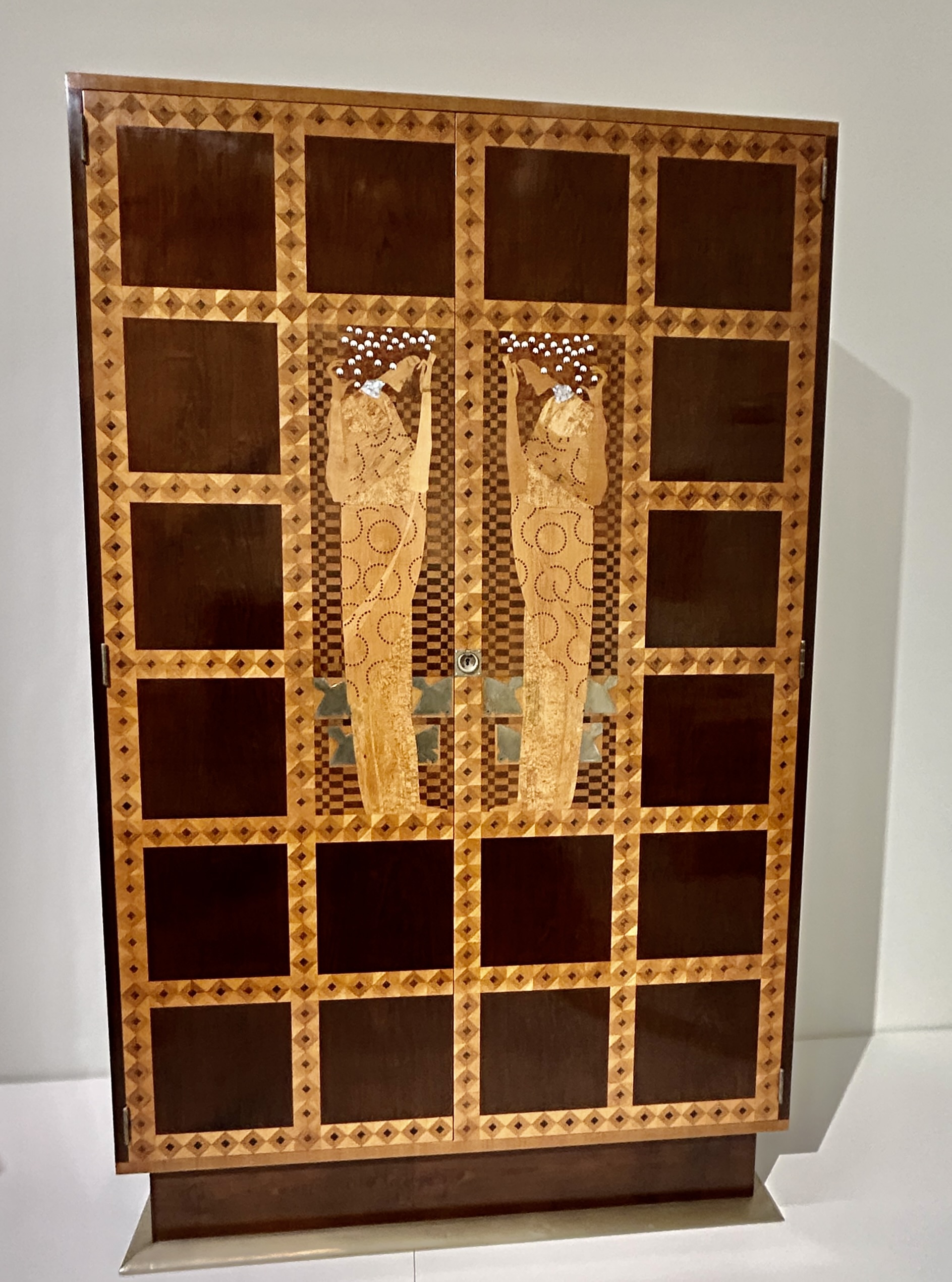
Viennese art glass from this period is also prominently on display.
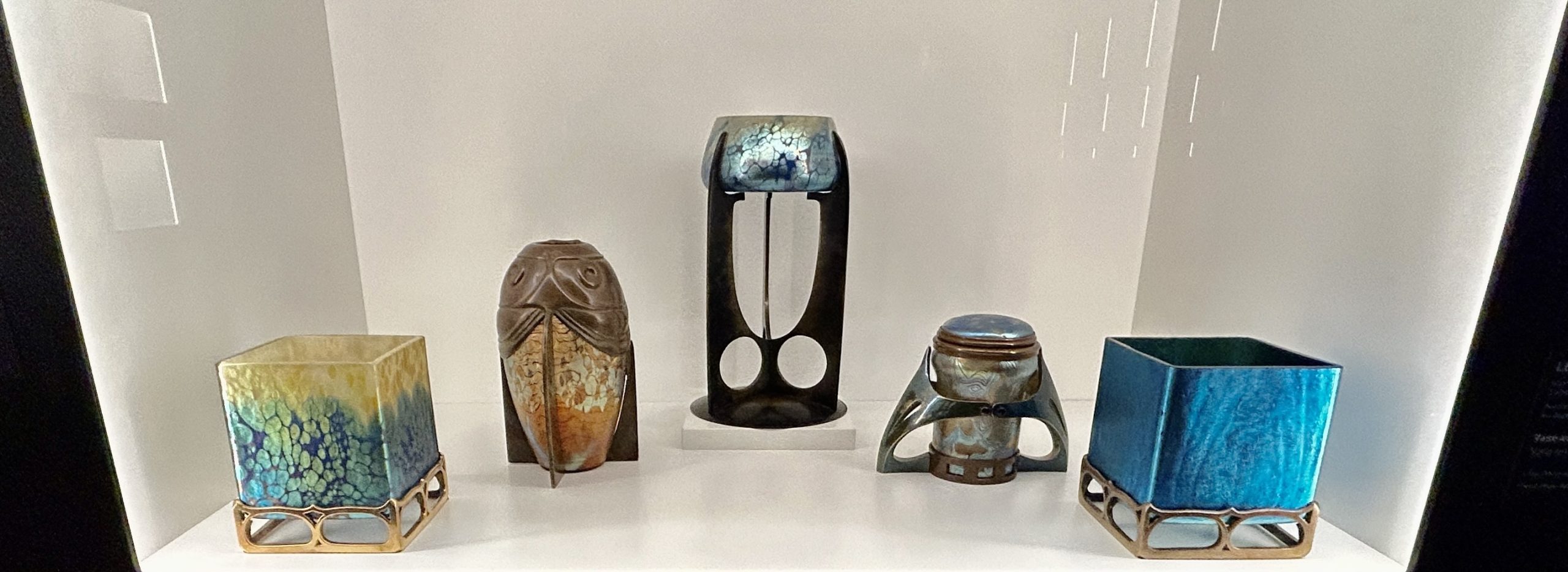
While you won’t need the time to properly explore the Leopold Museum that you would the Kunsthistoriches, this place will still keep you mesmerized for a morning or afternoon. Here is a gallery of some other works I took note of on my visit.
- Klimt – Altar of Dionysius
- Klimt – Altar of Dionysius
- Klimt – Morning by a Pond
- Schiele – Calvary
- Schiele – Cardinal & Nun
- Schiele – Crescent Houses
- Schiele – Reclining Woman
- Schiele – Setting Sun
- Schiele – Transfiguration
Vienna has an even 100 museums, so you’d have to spend a lot of time here to see them all. I’ve got time for just one more. The Ephesos Museum is an adjunct of the Kunsthistoriches Museum located in a portion of the Hofburg Palace which also doubles as the residence of the Austrian president. I’ve been to Ephesus (my spelling) a number of times and consider it to be one of the greatest archaeological sites in the world so I wasn’t going to pass up a chance to see what the Austrians had brought back from there during their excavations over a century ago.
The place was virtually deserted as you can see from this photo of the gallery containing the remnants of the Roman Era Parthian Monument that once adorned the facade of the Library of Celsus. When the library was destroyed by an earthquake in 262 the various pieces were reused in different places in Ephesus until the Austrians collected them in the late 19th century and brought them here. You can get a detailed description of the monument by following this link.
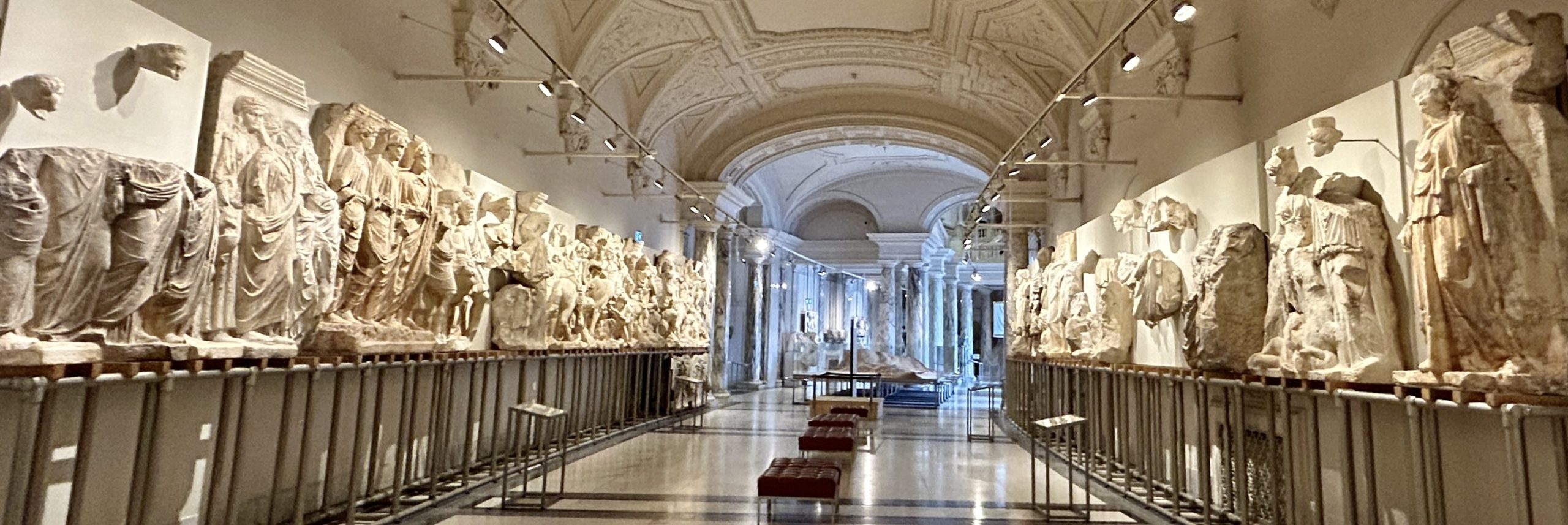
The most striking artifact in the Ephesos Museum is this bronze statue of a an athlete scraping off the sweat after a workout at the palaestra (gymnasium). It was found in 234 pieces under the rubble of the harbour palaestra in 1896 with only the head and shoulders intact. There are very few of these original Roman era bronze statues to be found anywhere and this one is exceptional, particularly the face and the hair which is matted as it would be after a stiff workout.
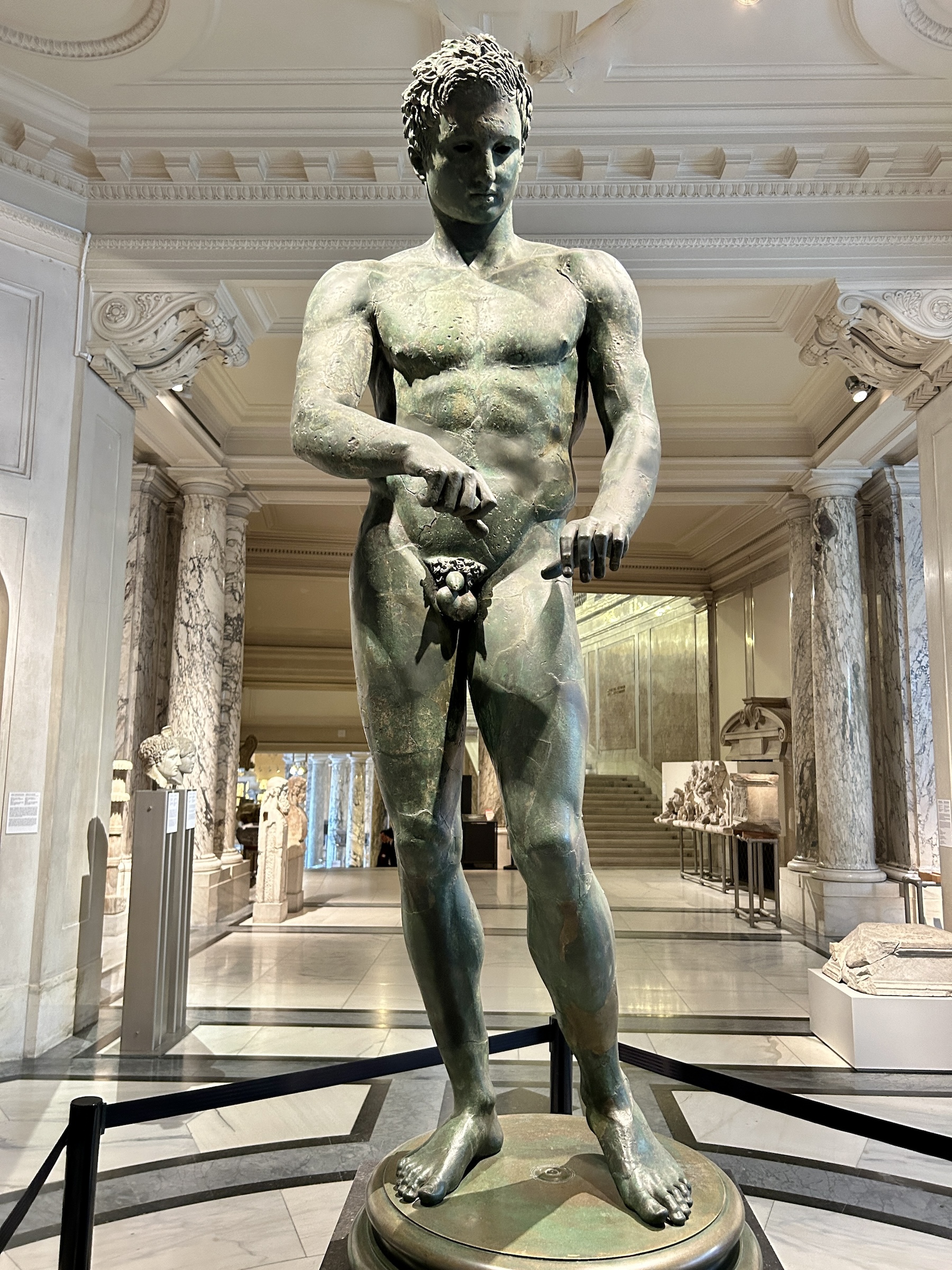
This doesn’t look like much, but its one of the few pieces attributable to one of the Seven Wonders of the World. The Temple of Artemis at Ephesus was the third great temple built to this goddess on the site and considered to be the greatest such place of worship in the ancient world. Between fires, the Goths and the Christians, the temple was completely destroyed by the fourth century and the some of pieces used in the construction of the nearby basilica of St. John as well as Hagia Sophia in Constantinople. Other than the British Museum which has an entire room filled with artifacts from the Temple of Artemis, this museum in Vienna is one of the few places you can see the real deal. It might not look like much, but consider that Herodotus probably gazed at this same piece some 2,500 years ago in compiling his list of the Seven Wonders and it takes on a little more significance.
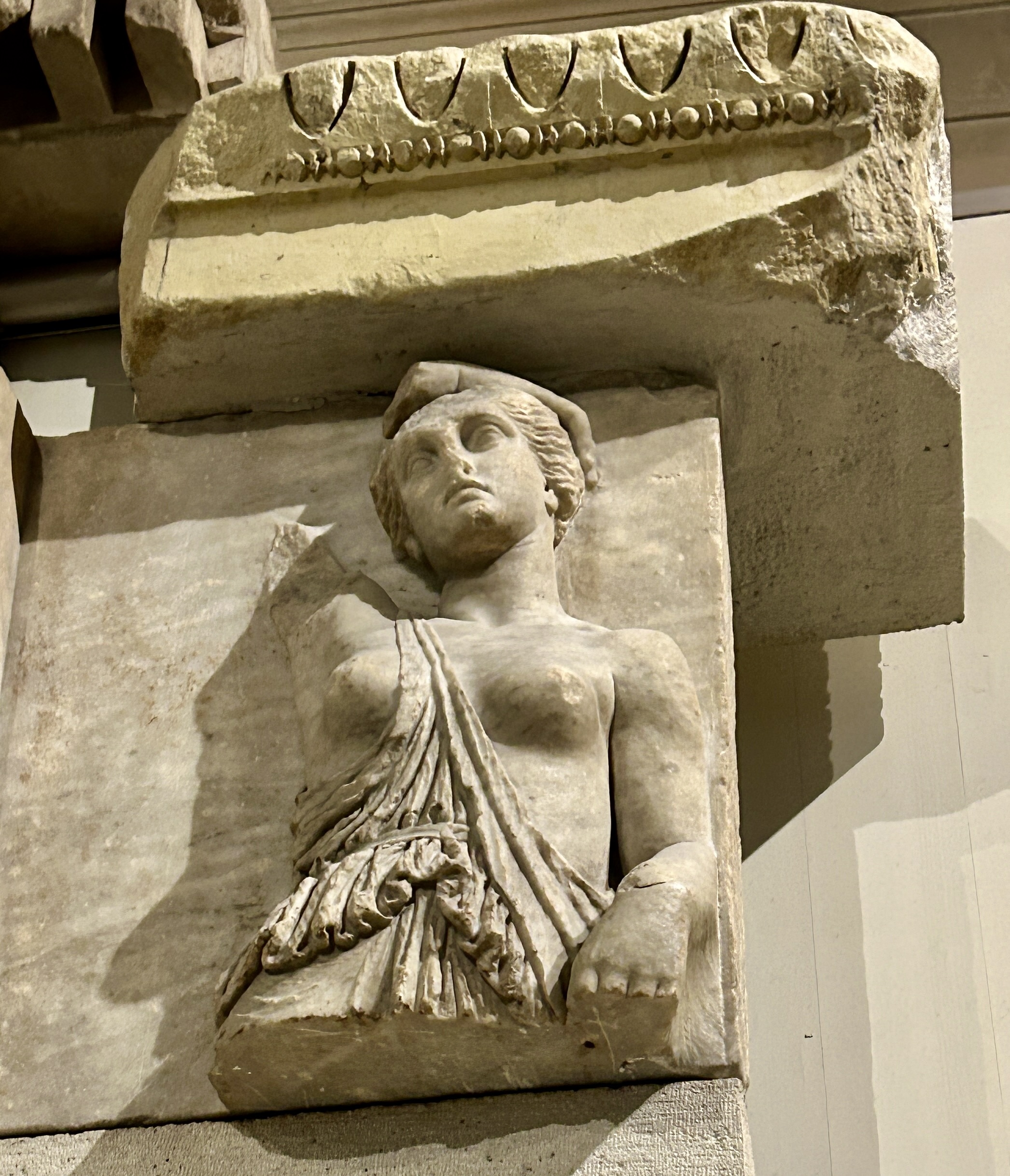
There are many more interesting pieces in the Ephesos Museum a few of which you can view in this small gallery.
- The Striding Poet
- Artemis
- Head of a Lion
- Portion of the Octogon
- Fragment from the Theatre
- Battle Scenes from the Parthian Monument
OK, I’m museumed out. Let’s leave the Museumquartier and head to the Prater district where there is a giant amusement park with one of the iconic things to do in Vienna – ride The Wheel.
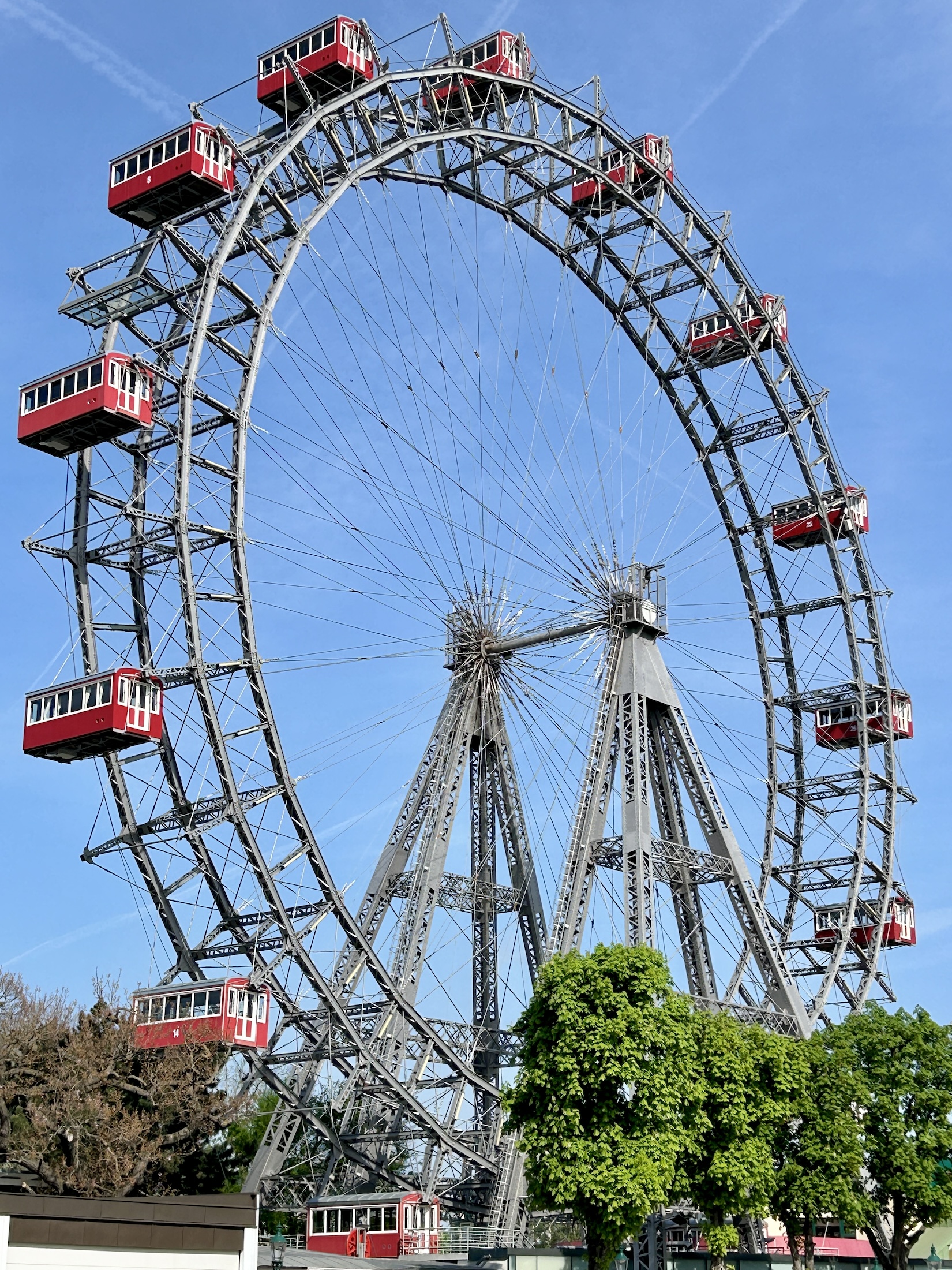
Built to mark the 50th year of Emperor Franz Joseph’s reign, it predates the London Eye and all the other imitators by over 100 years. It is said that you haven’t been to Vienna until you’ve taken a ride in The Wheel.
I first learned of its existence while watching the great noir film The Third Man where Orson Welles and Joseph Cotton have a come to Jesus moment while riding in it and have wanted to do the same ever since. Ride it that is, not have a come to Jesus moment.
Like the London Eye, it moves very slowly and gives one a magnificent view of the city in all directions. Until I was up here I had no idea that Vienna actually has some modern buildings.
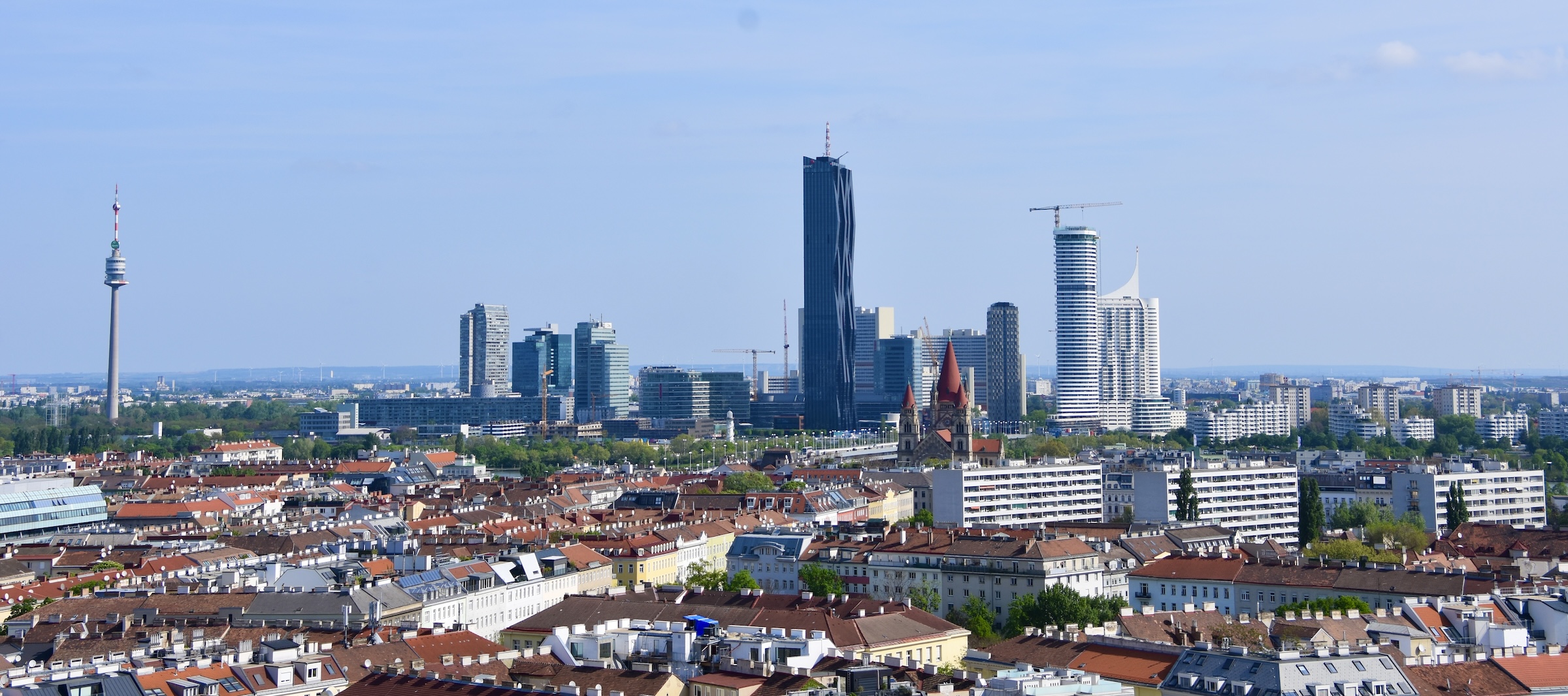
Regular readers of my posts will know that I love visiting cemeteries and that’s where I’m headed next.
The Vienna Central Cemetery is one of the largest in the world with over 330,000 grave markers and another 2.7 million unmarked interments. It was purpose built in 1874 to provide space for the city’s burgeoning population to be buried and also to relocate to one place some of the city’s most famous residents. It’s located on the southern flank of the city and requires taking a tram from the end of the Ubahn line. Unfortunately you cannot buy a map indicating where the most famous graves are located like at most other notable cemeteries like Pere Lachaise in Paris. So it was more by luck than anything else that I found my way to the section where Beethoven and many other great composers are buried.

Within a few metres of each other you’ll find not only Beethoven, but Brahms.
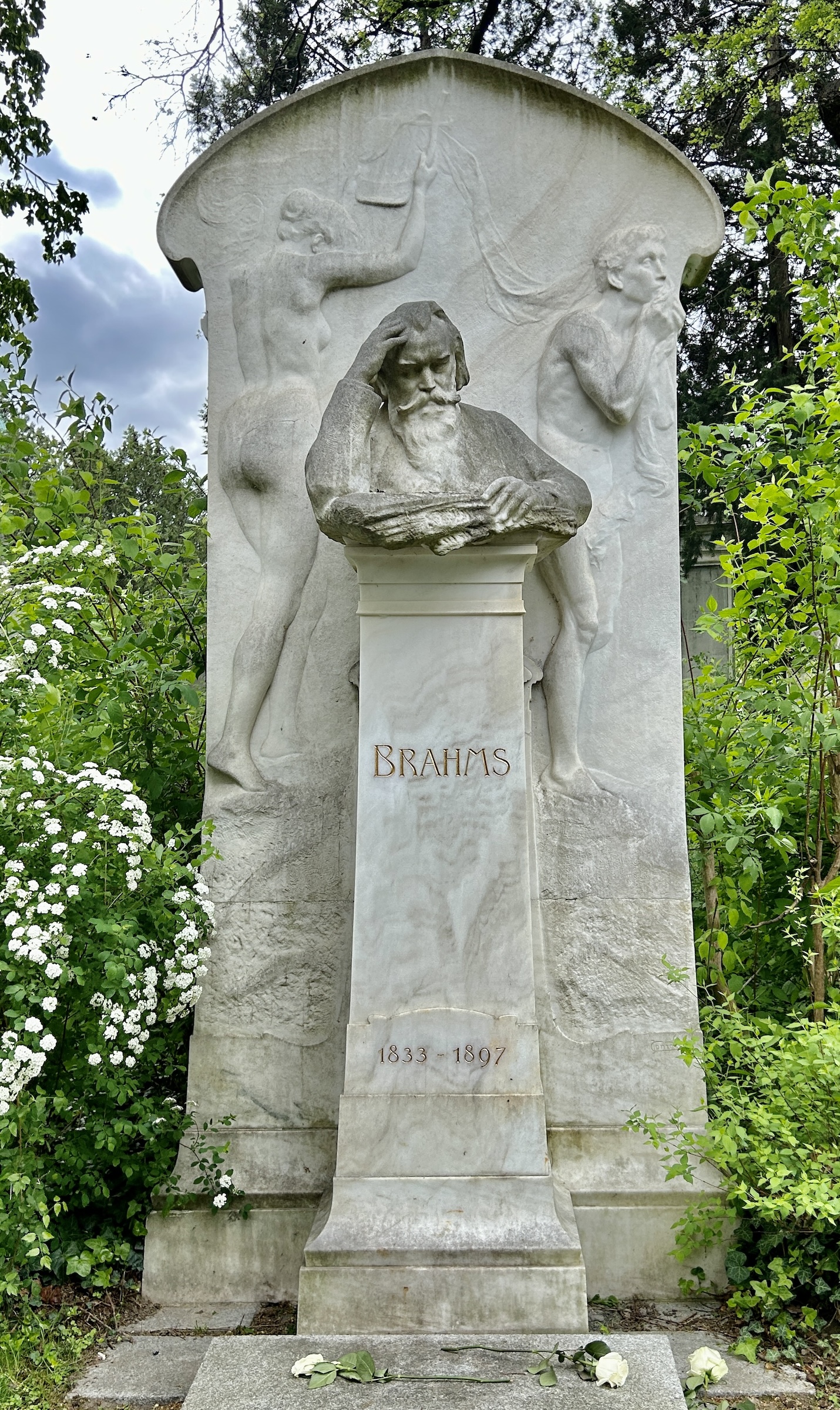
Schubert.
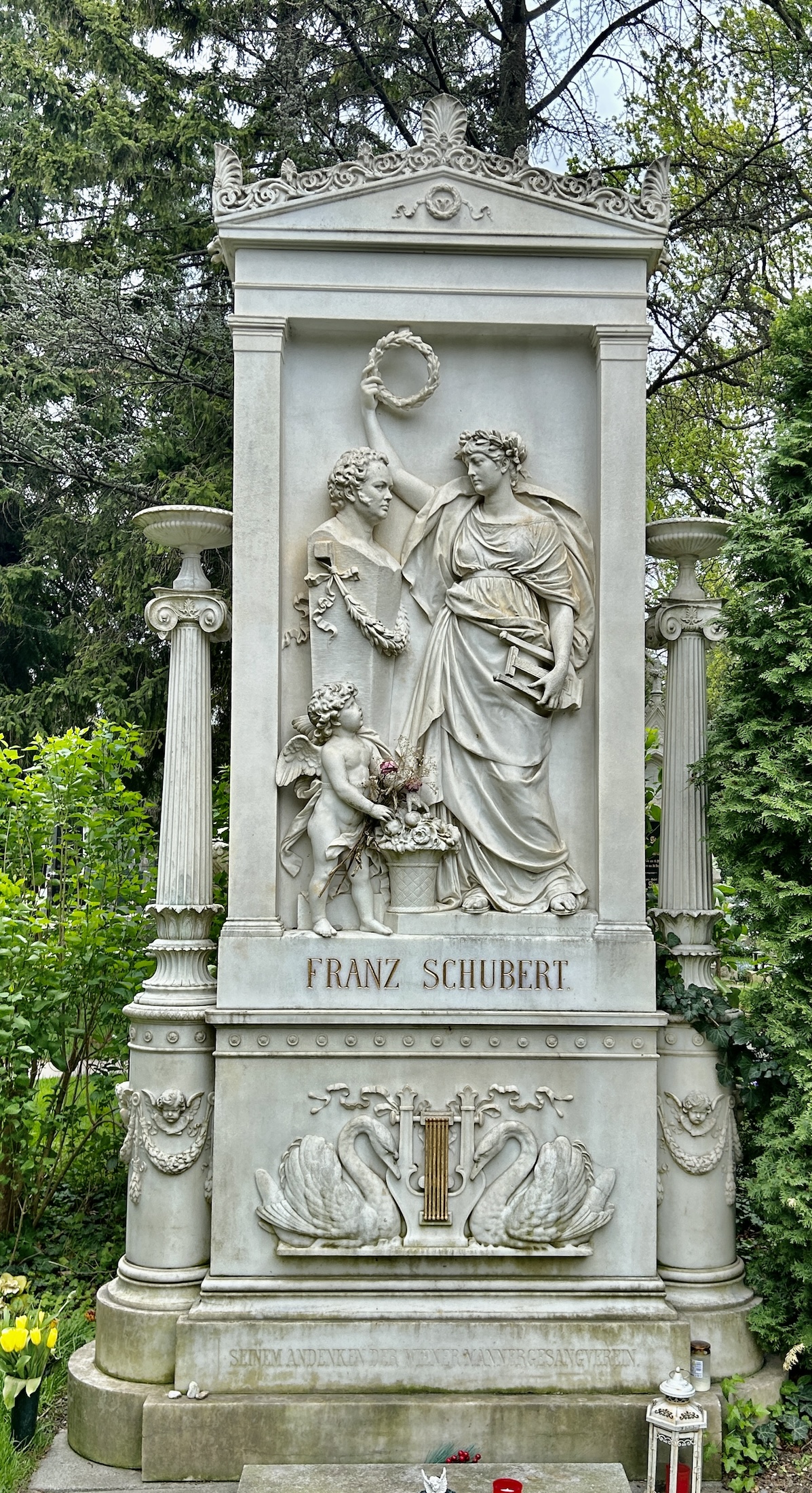
Johann Strauss.
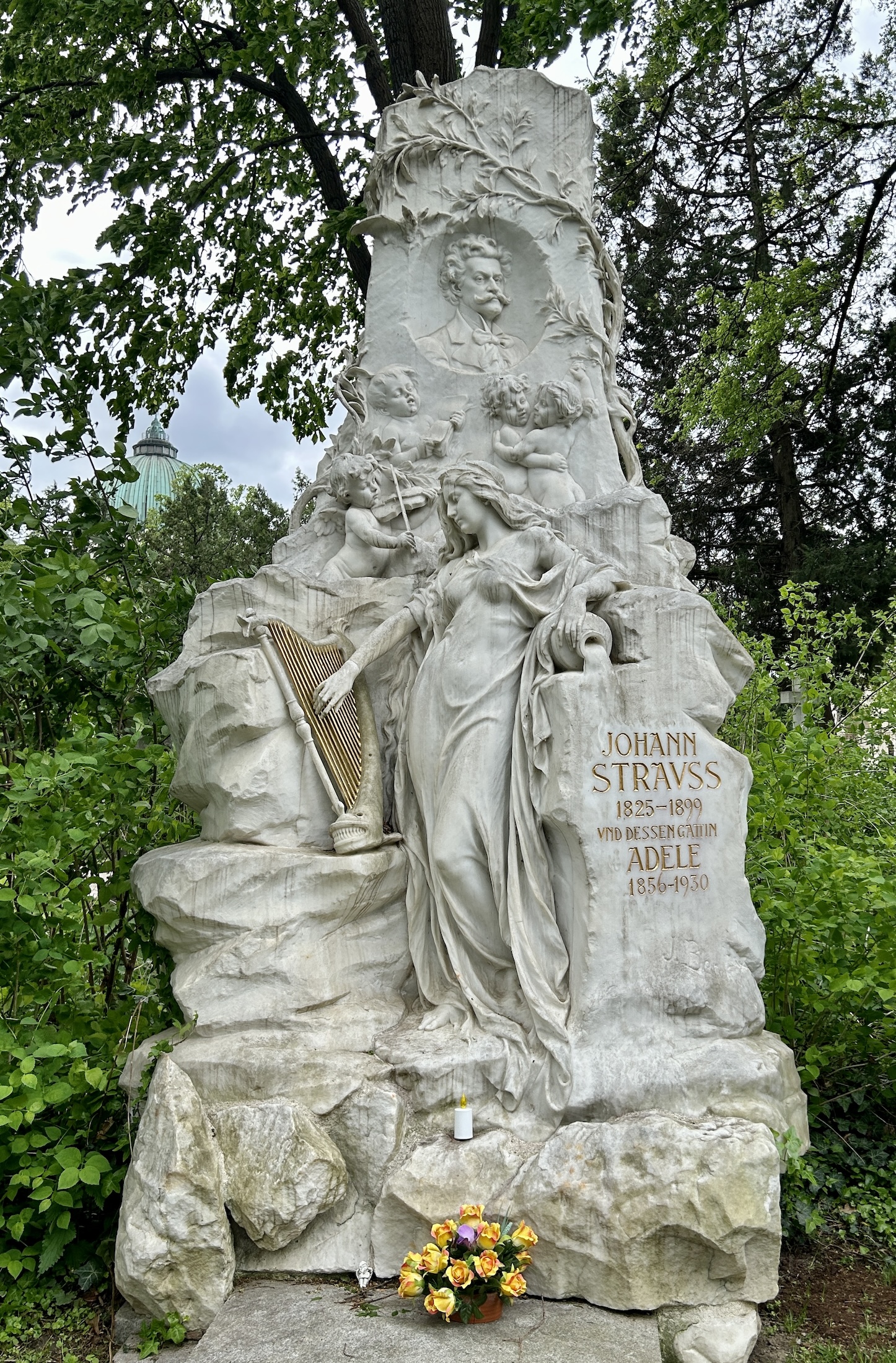
And this monument to Mozart whose remains are in another Viennese cemetery.
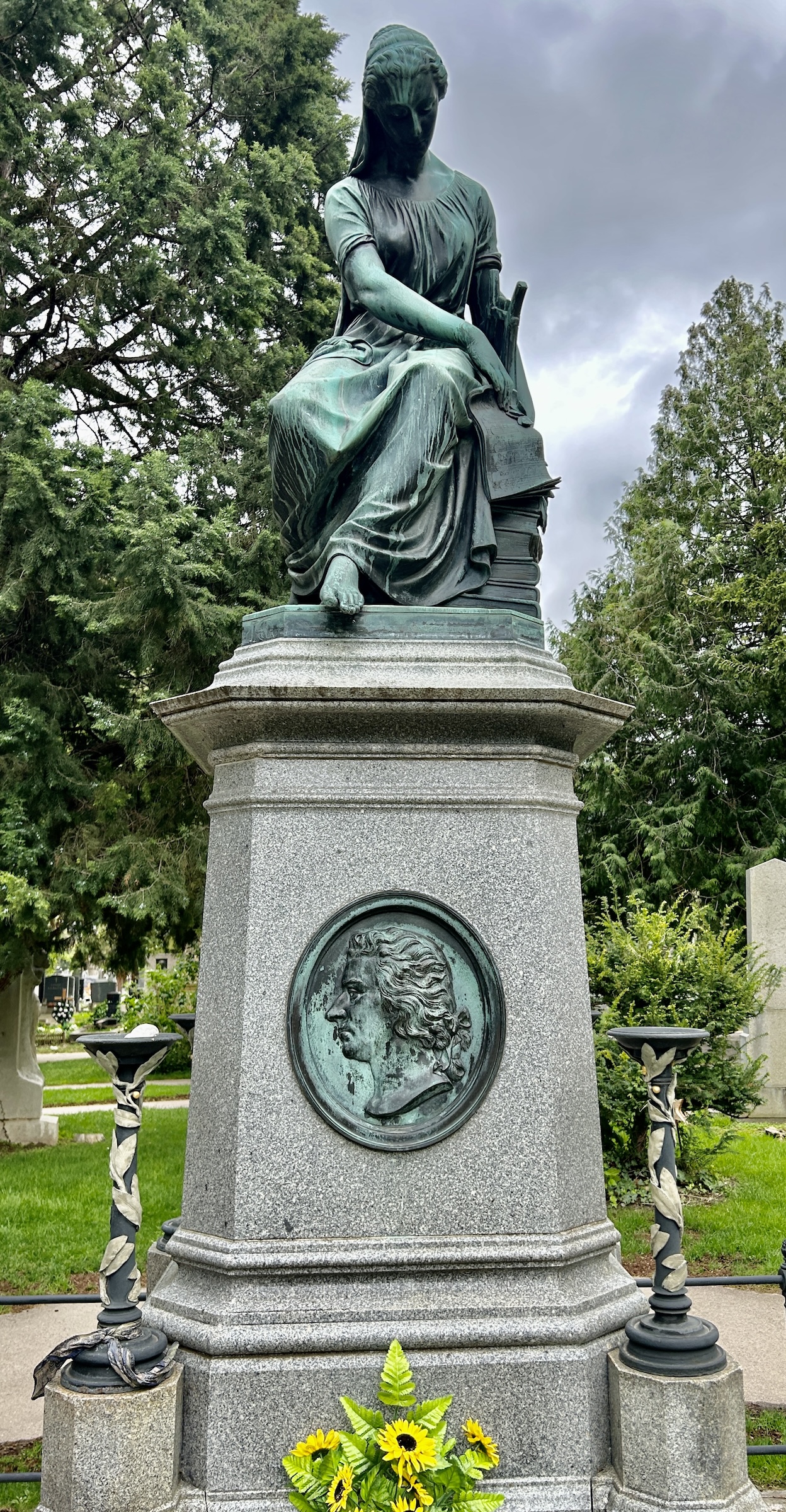
There are tons of beautiful grave stones in this cemetery and with more time it would certainly merit its own post, but time is pressing and I have to get a move on, Cyprus is calling.
Just before leaving, a brief comment on the meals I had in Vienna. The first night I went to a pub near the hotel and had the classic Viennese dish, wiener schnitzel and it was no better than any I’ve had in Canada, maybe not even as good. However, the beer was great.
The next two days I had much better luck with two outstanding meals. This is a mushroom ragout I had in an historic restaurant in the Museumquartier, the name of which I negligently forgot to take note of. The umami taste coming from these mushrooms was simply off the charts.
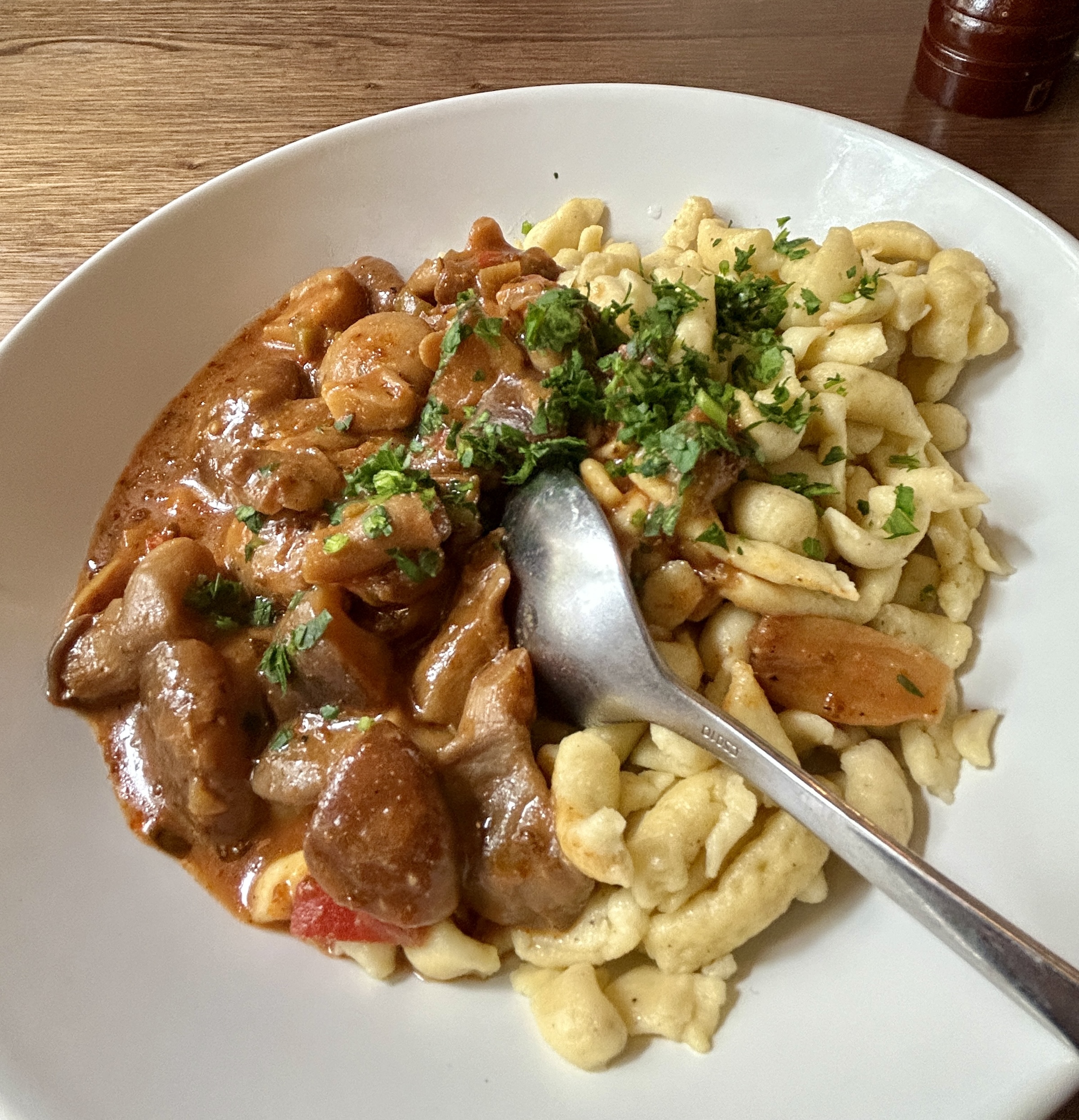
The next day I had this wonderful house salad at the Marx restaurant not far from the Ubahn station near the hotel.
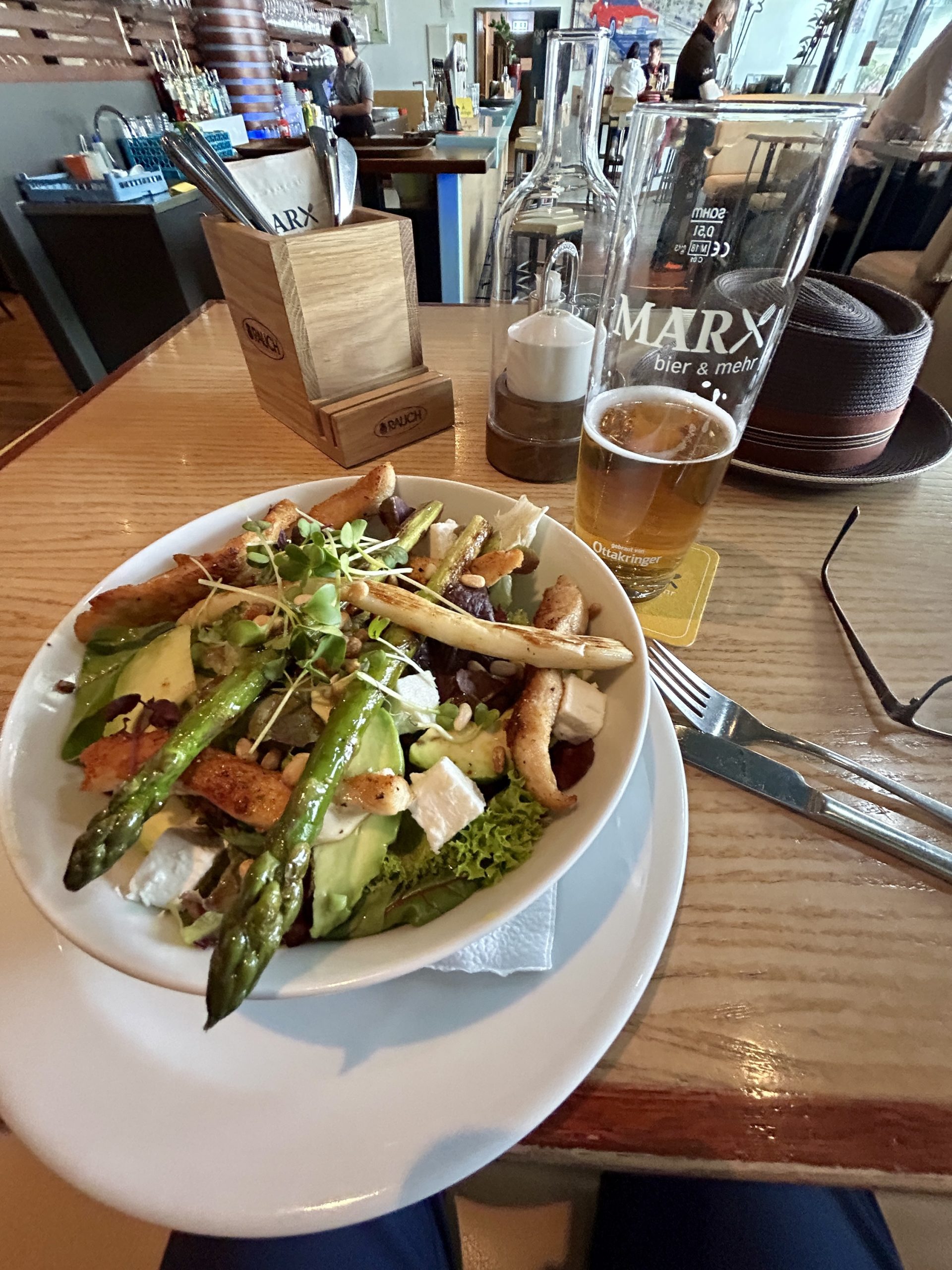
What I failed to do meal wise was to sample any of Vienna’s famous desserts like sachertorte or strudel. Again, highly negligent of me.
There are so many more things I would like to have seen during my short stay that I will definitely be back with Alison and we will take in the Klimt’s at The Belvedere, tour the Schönbrunn Palace, take a boat ride on the Danube and maybe visit the opera.
I’ll see you in Cyprus.


